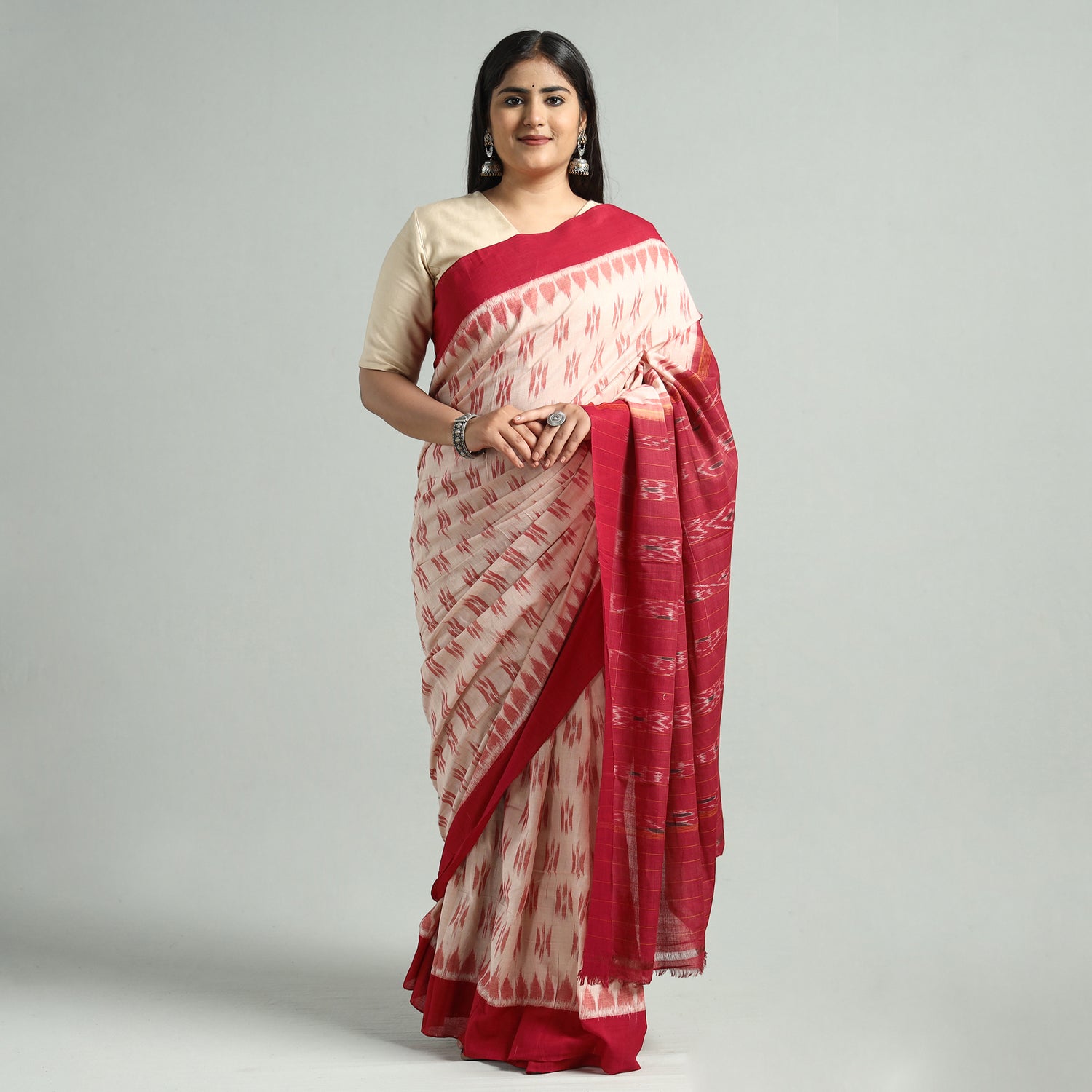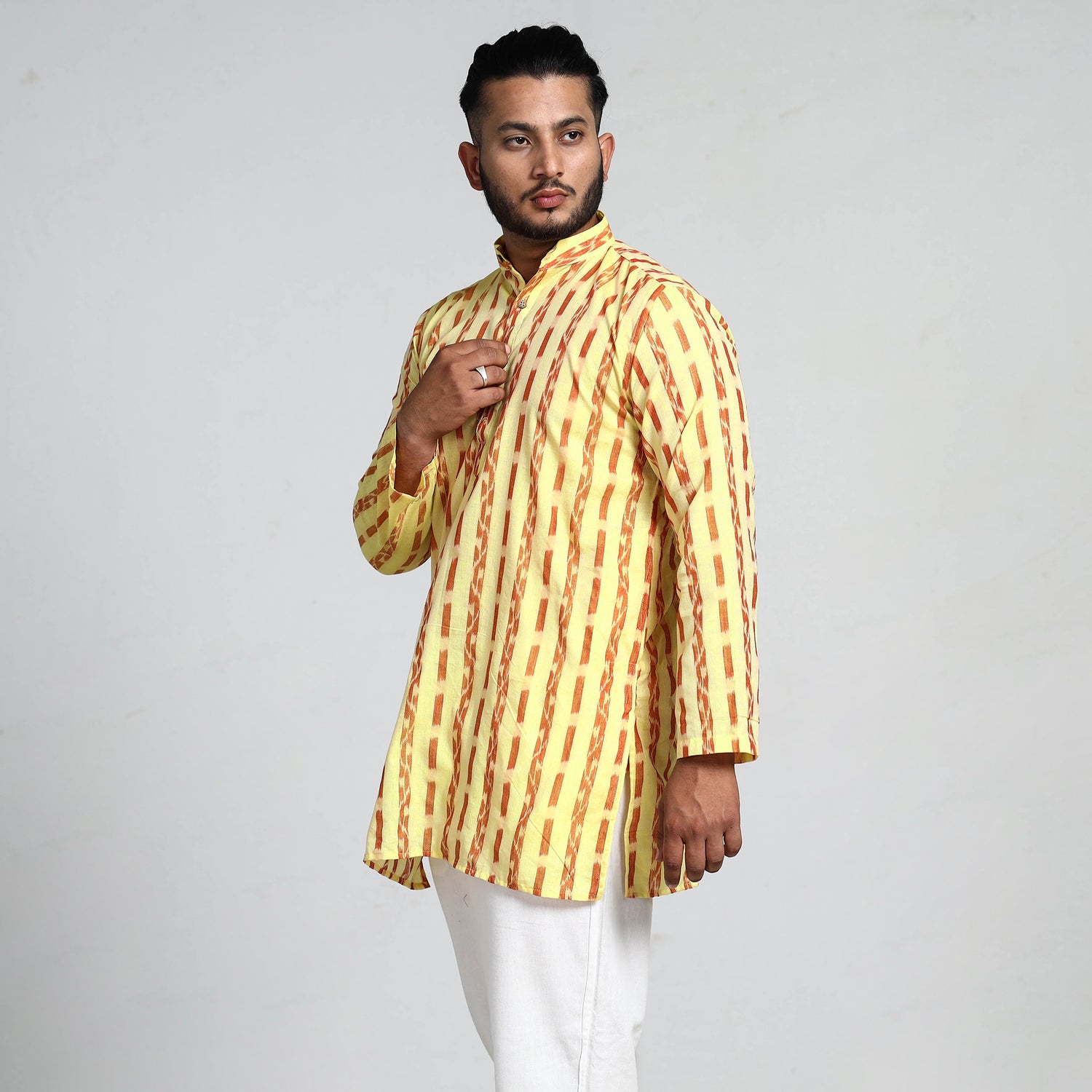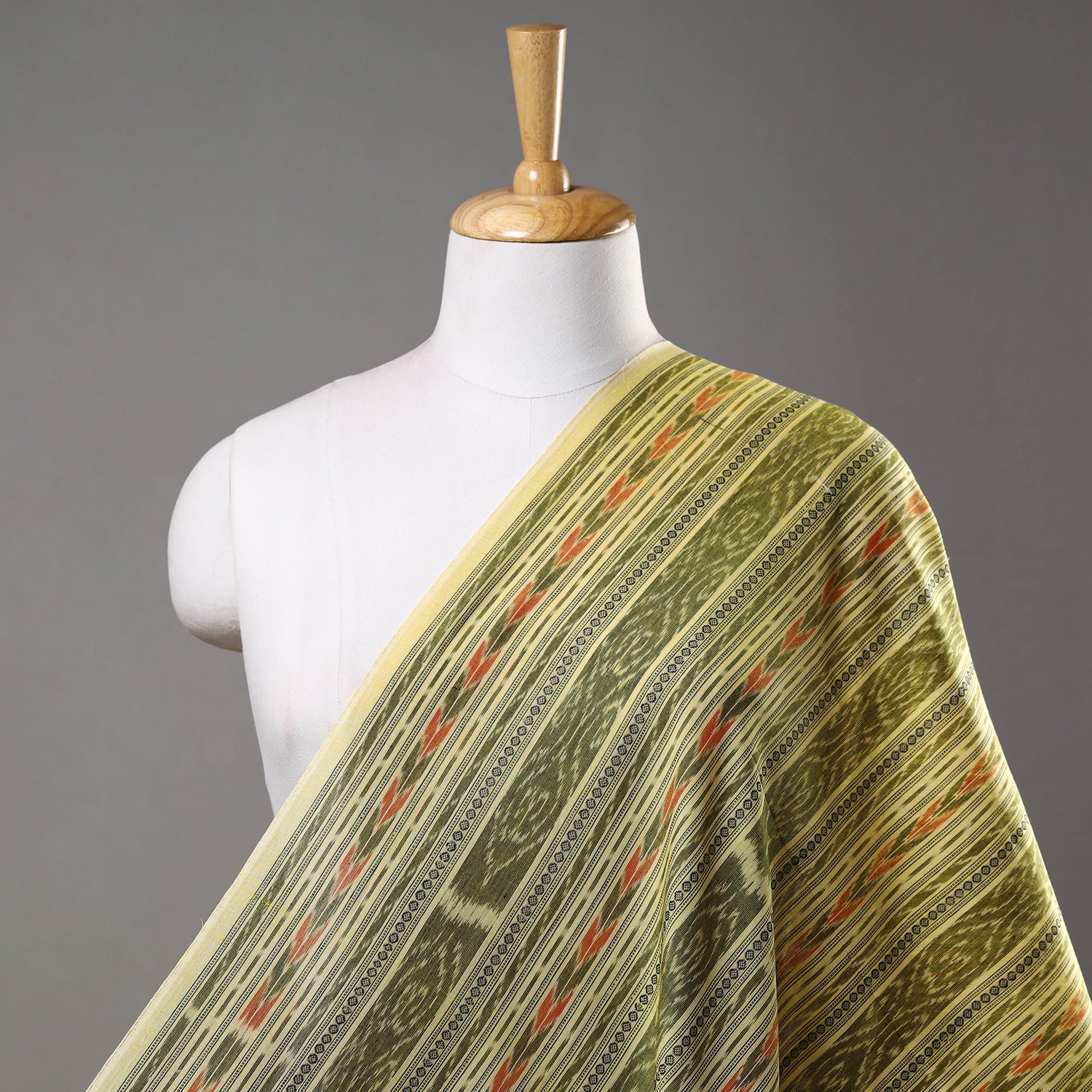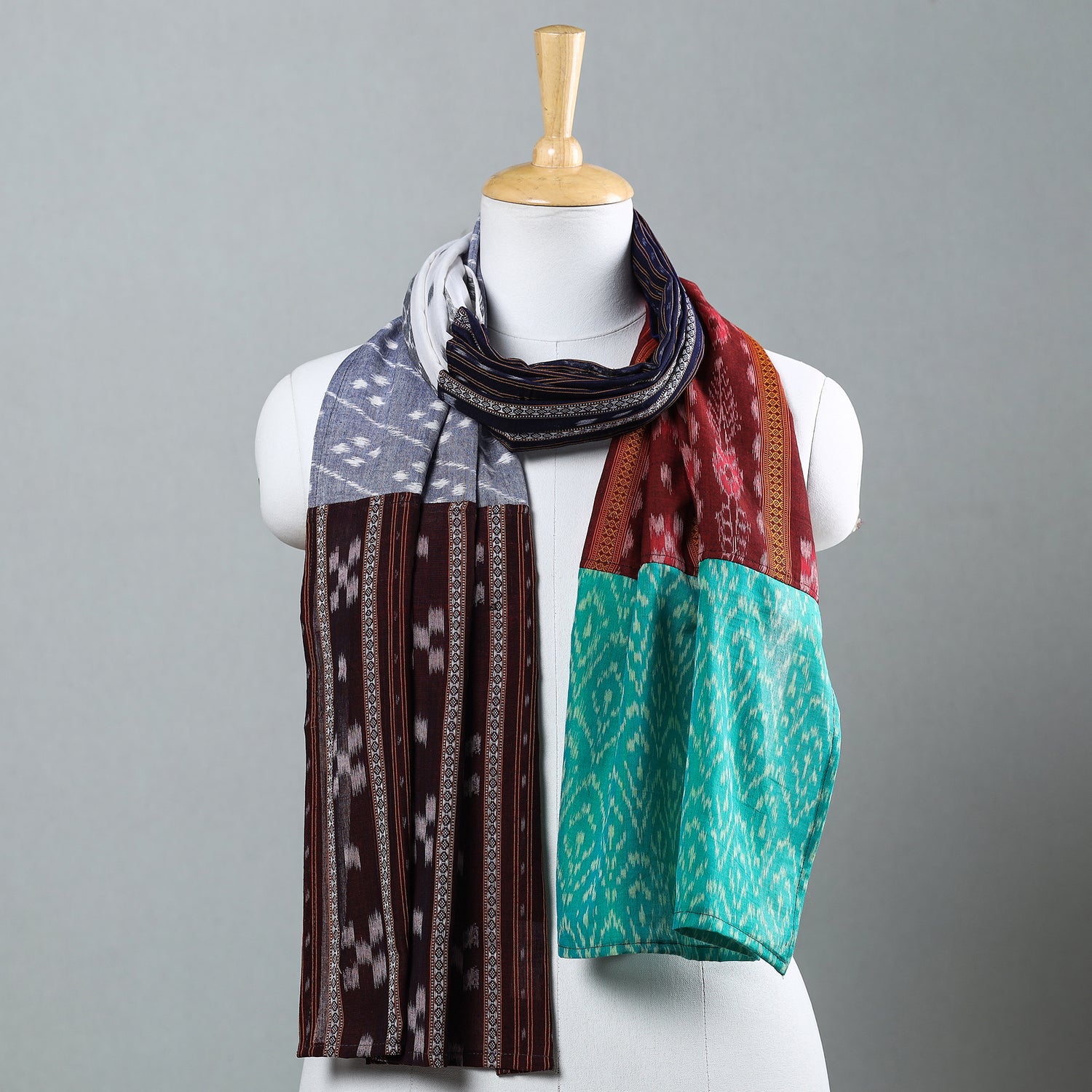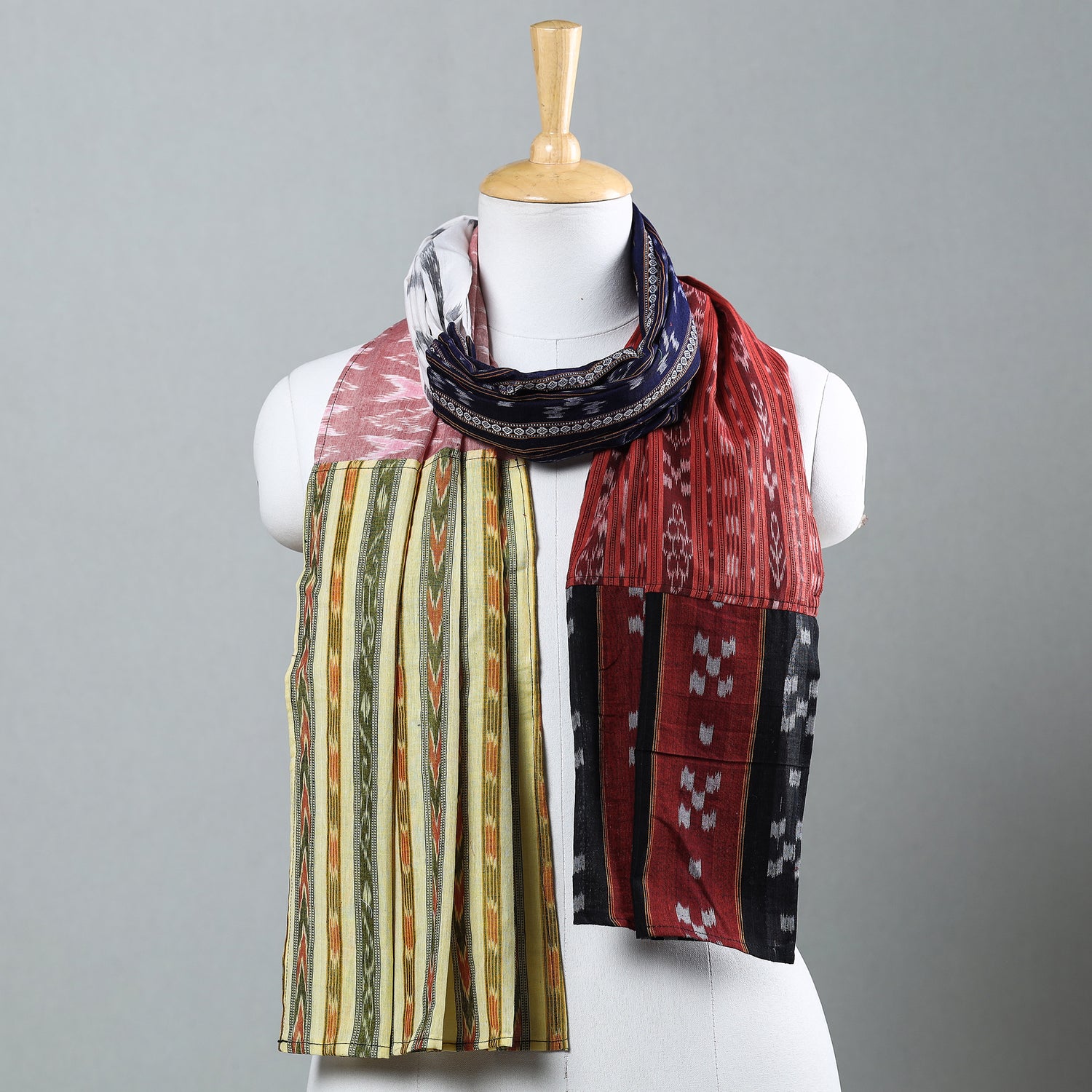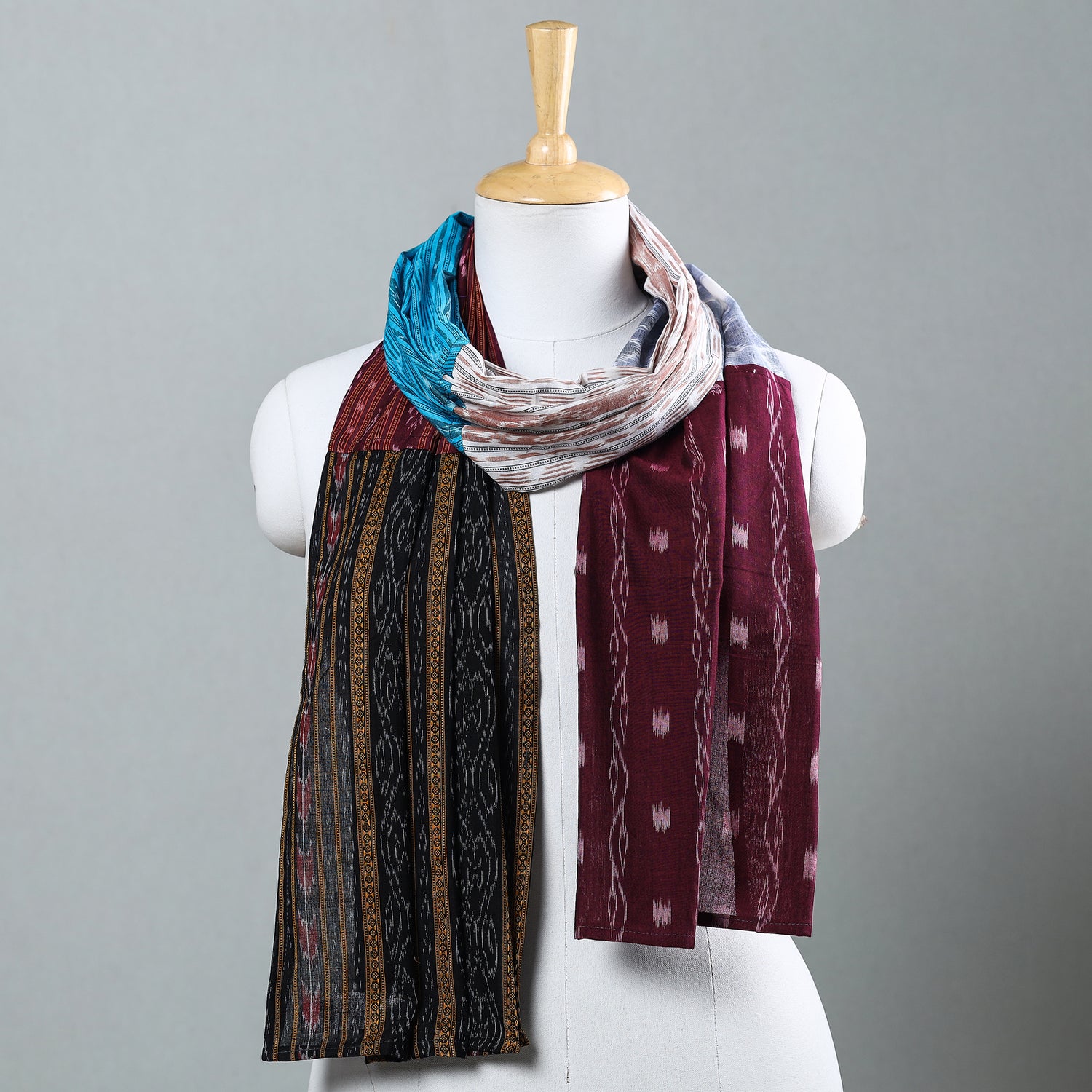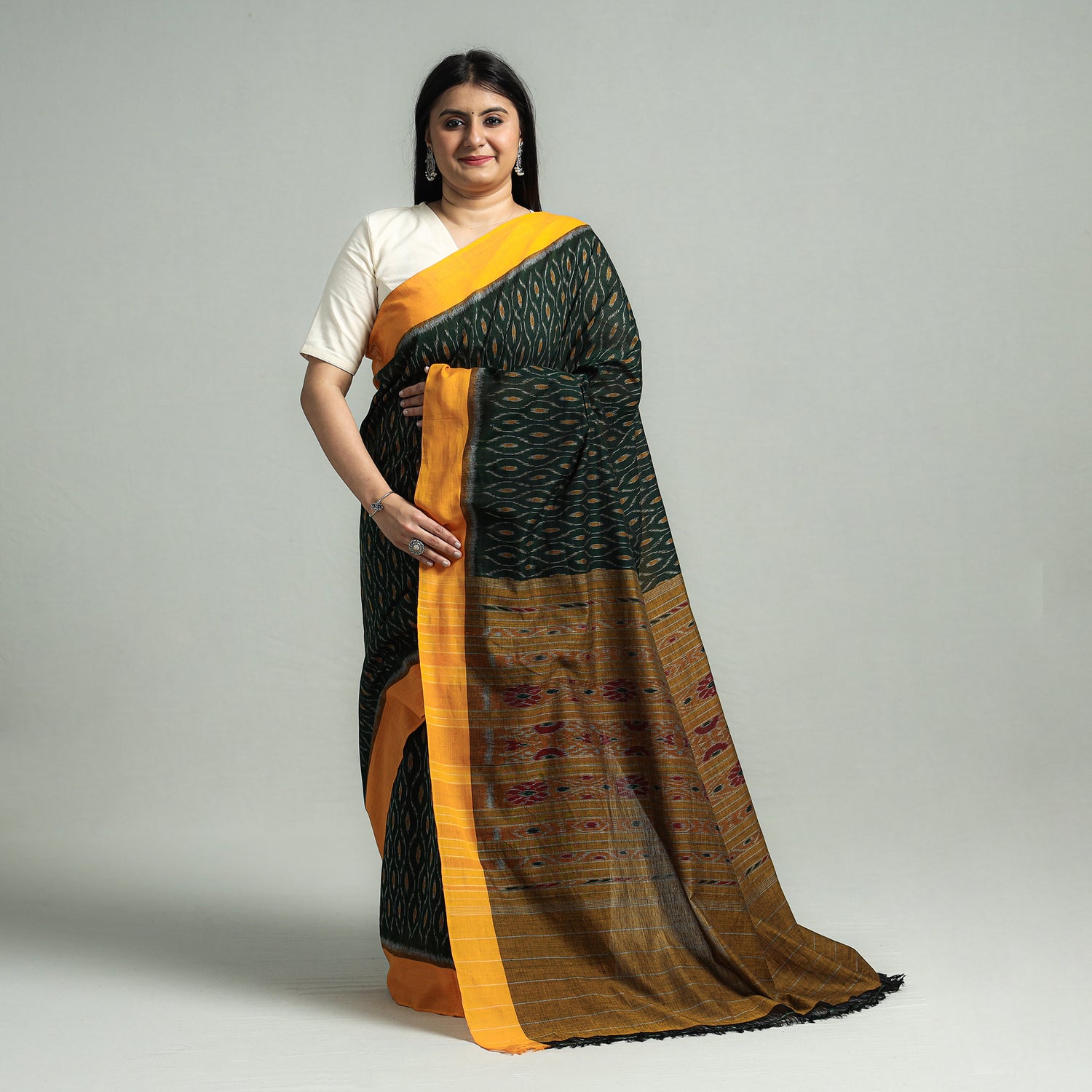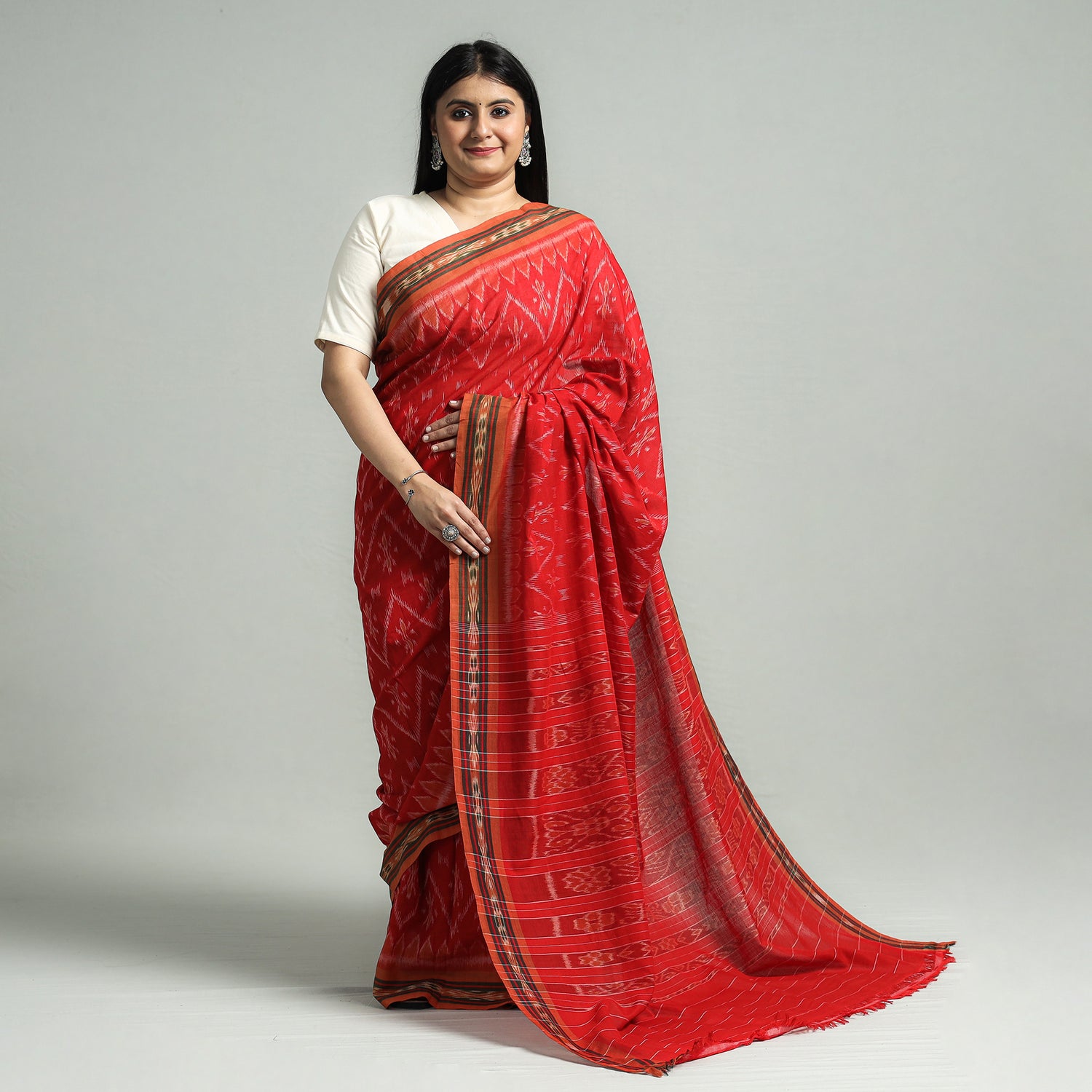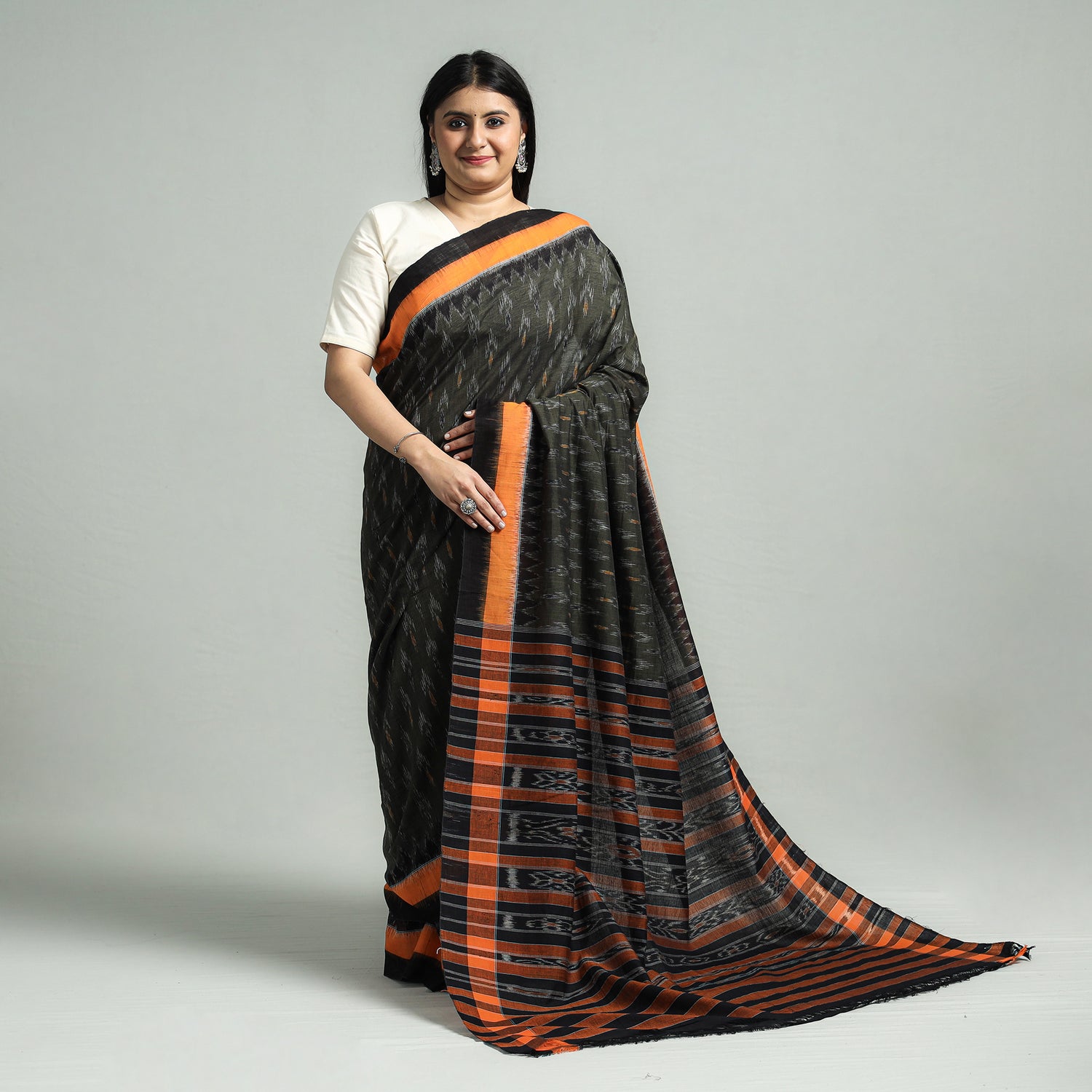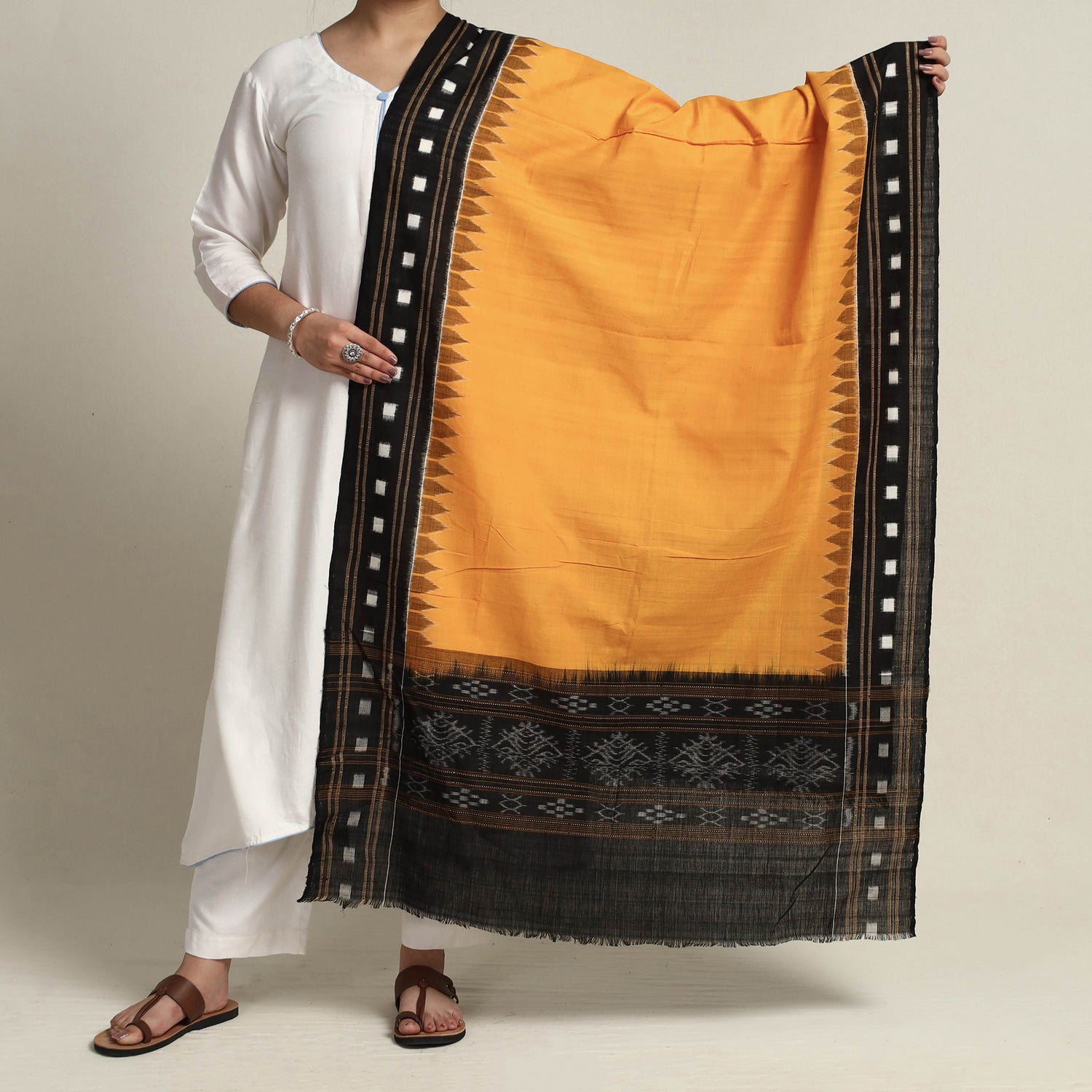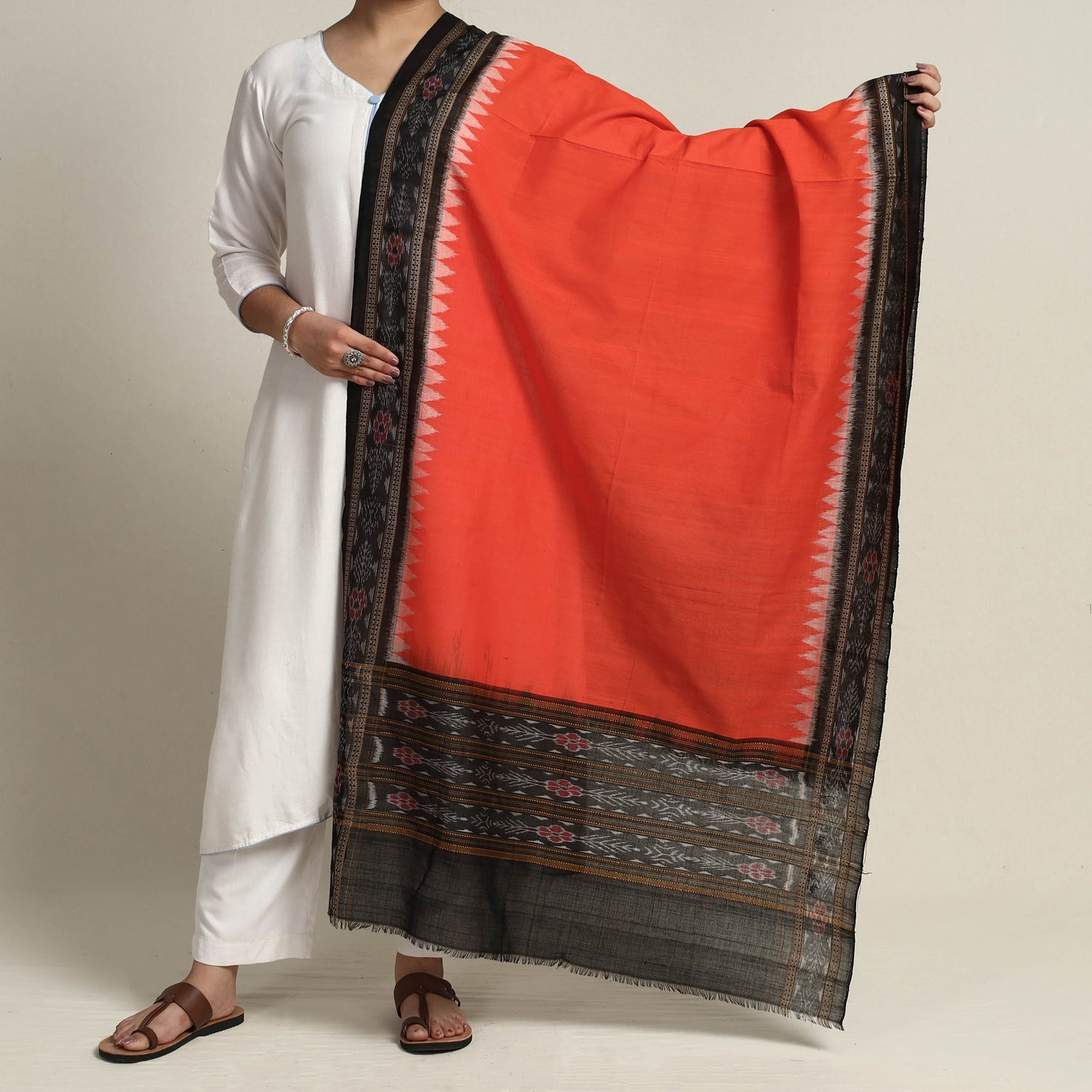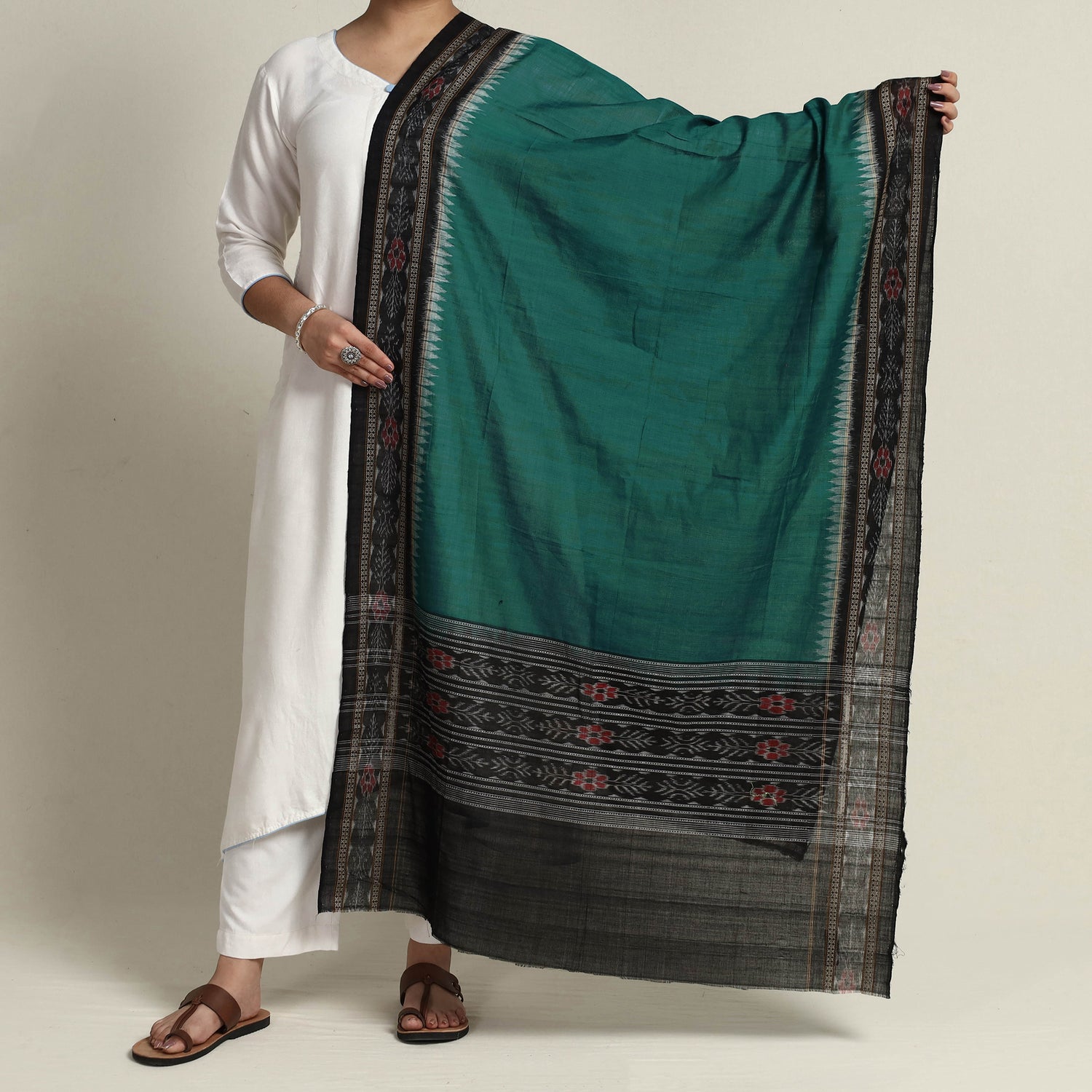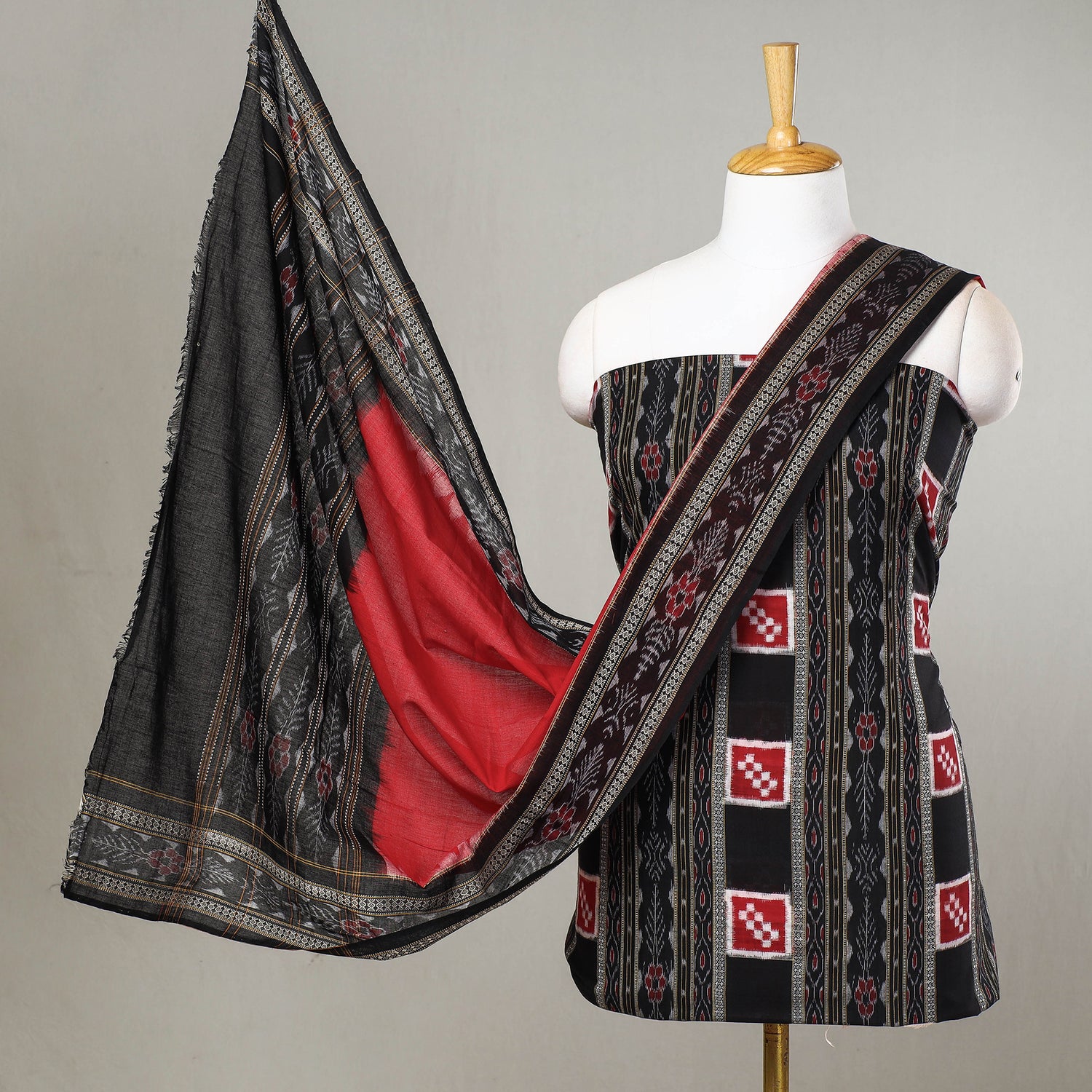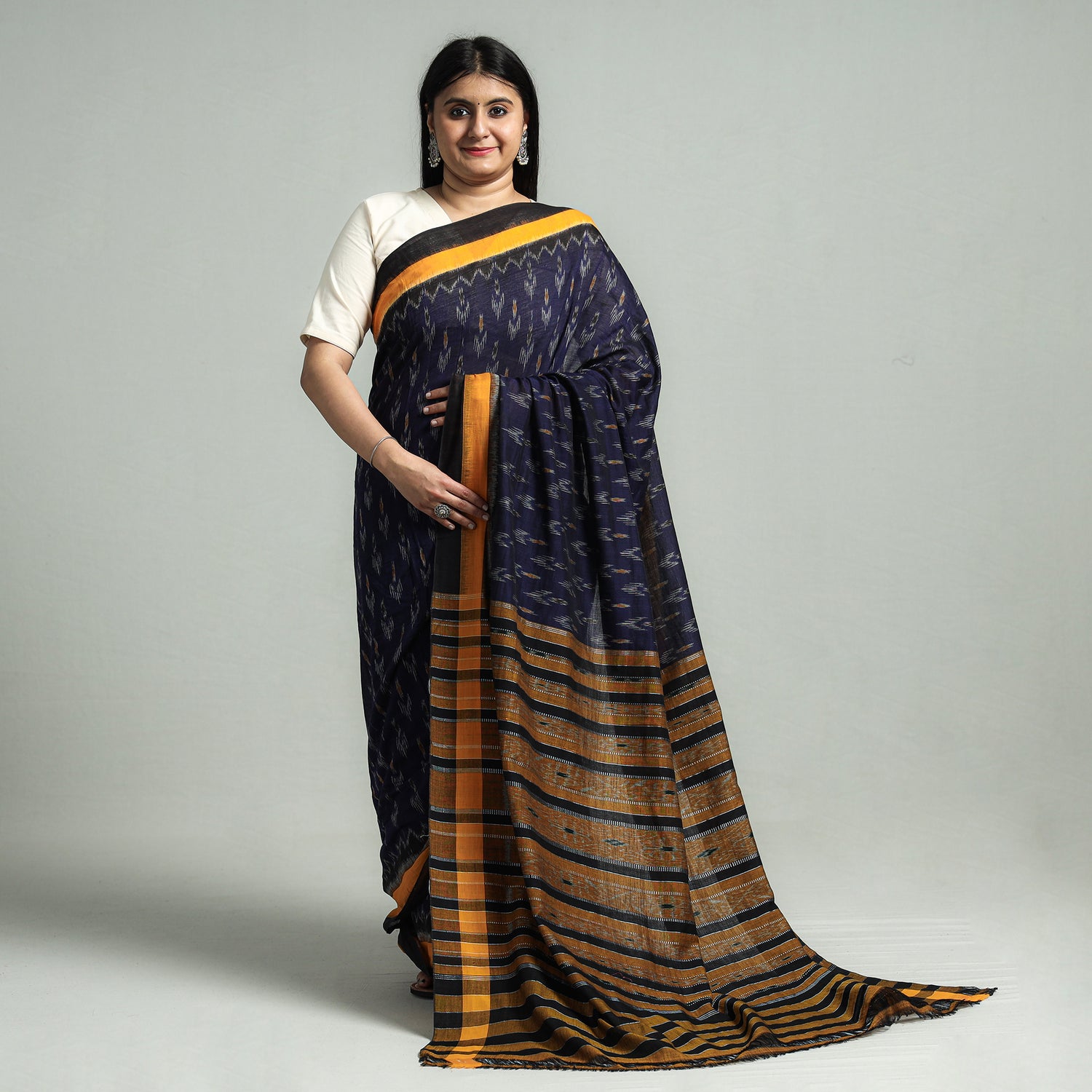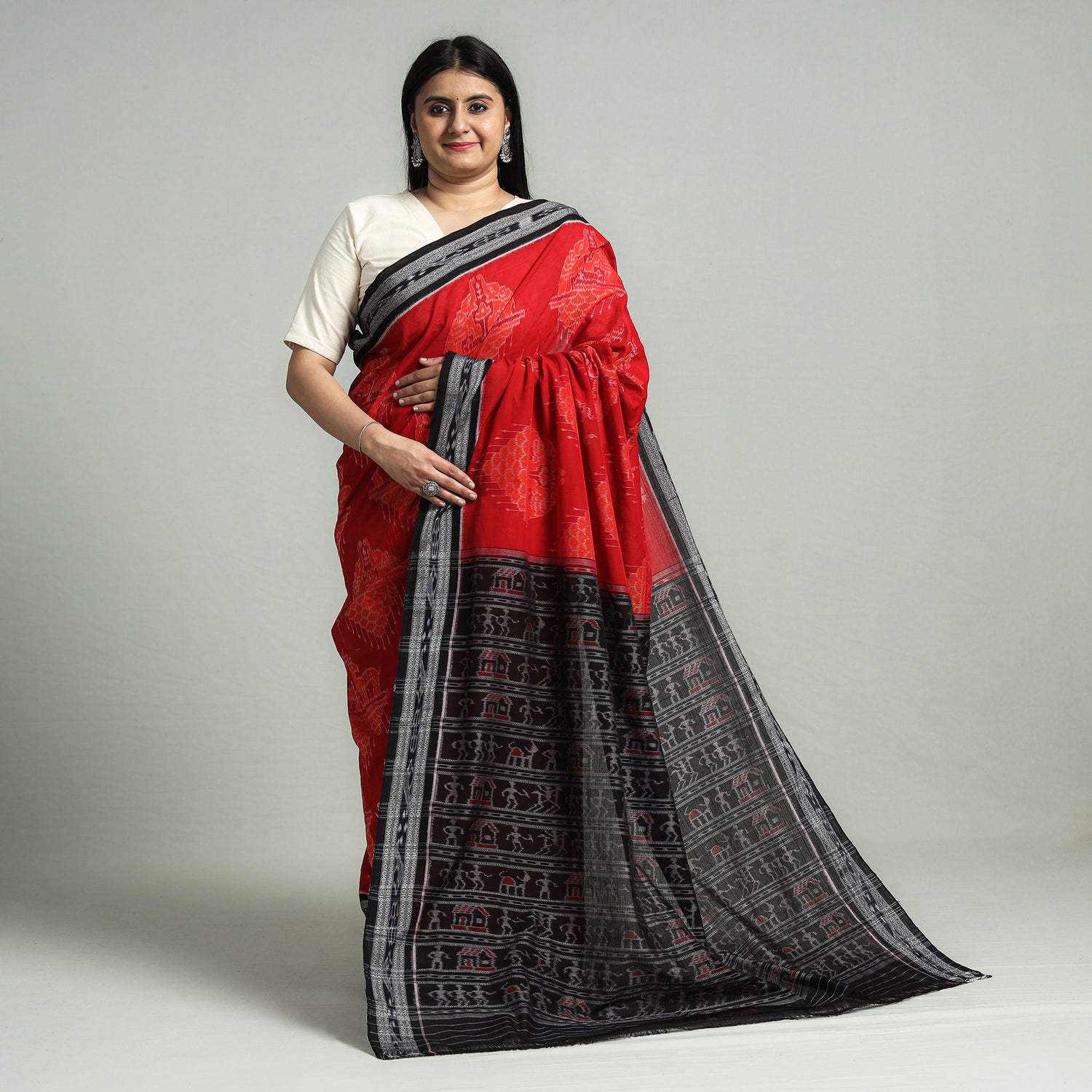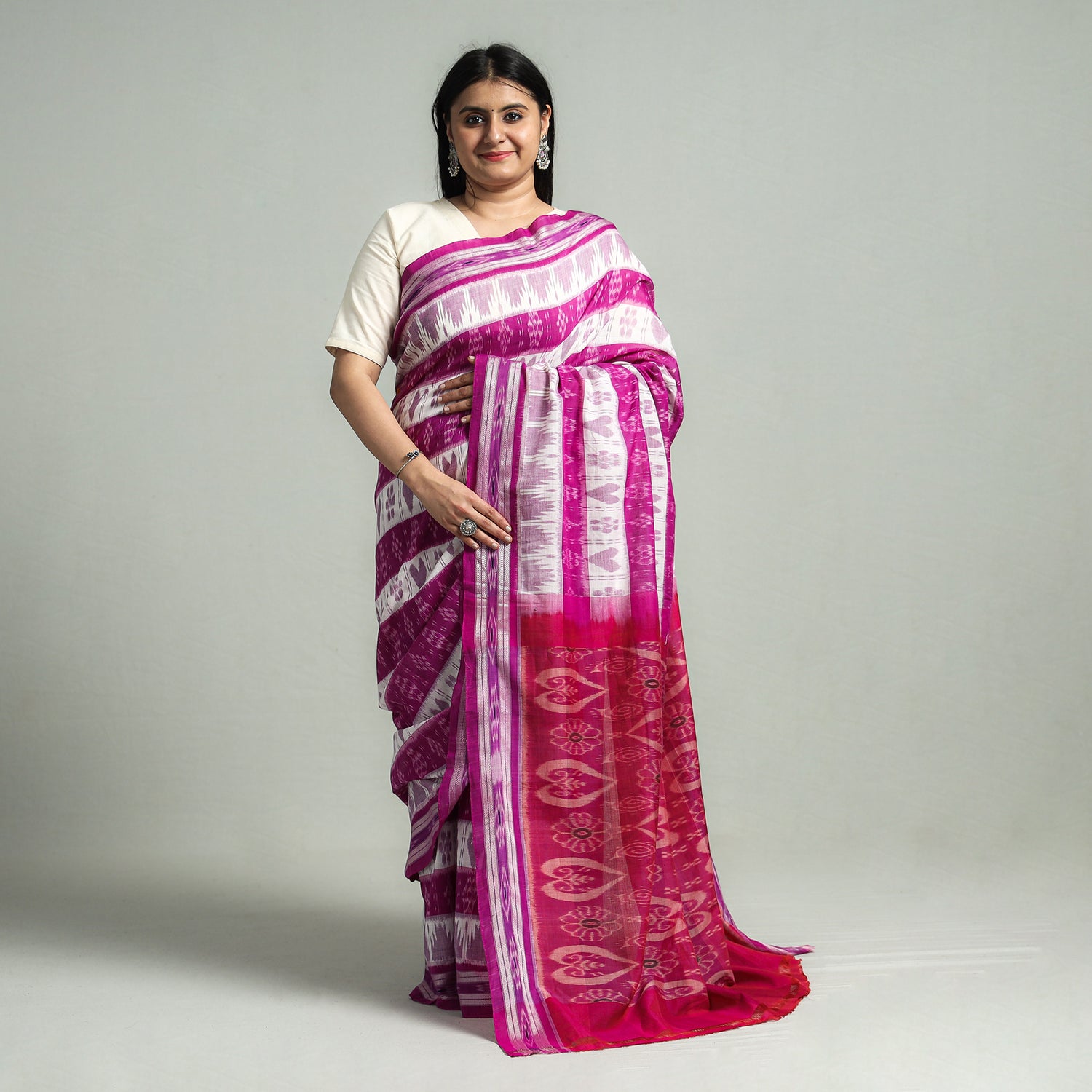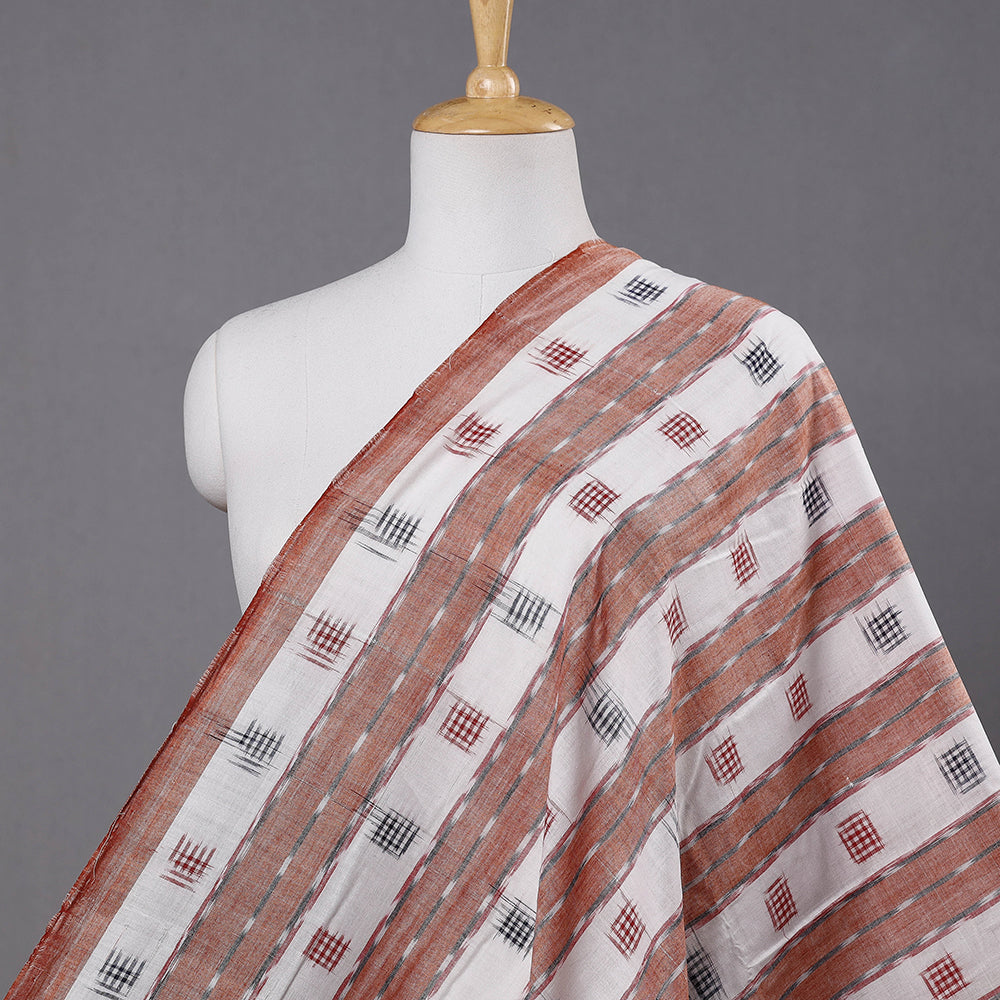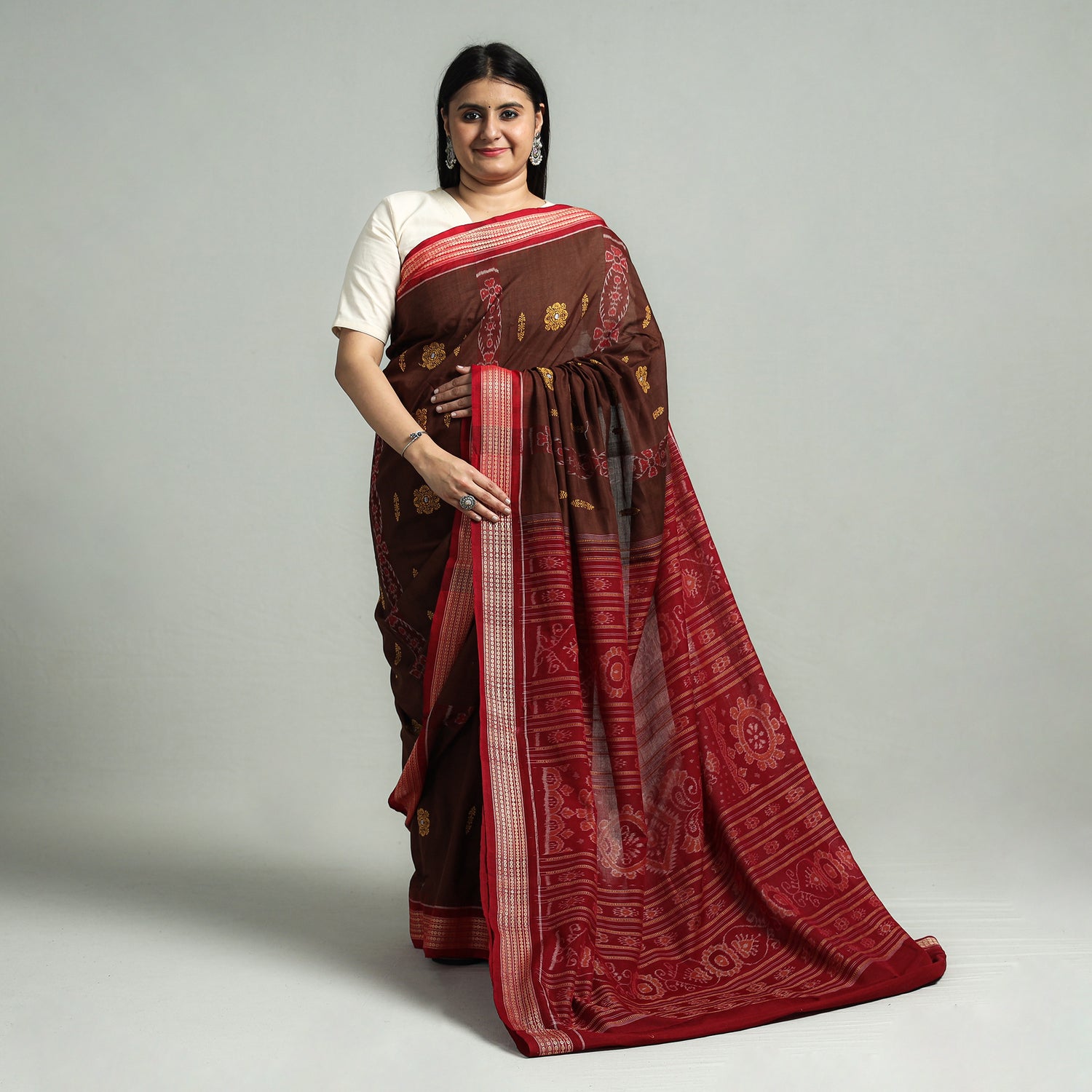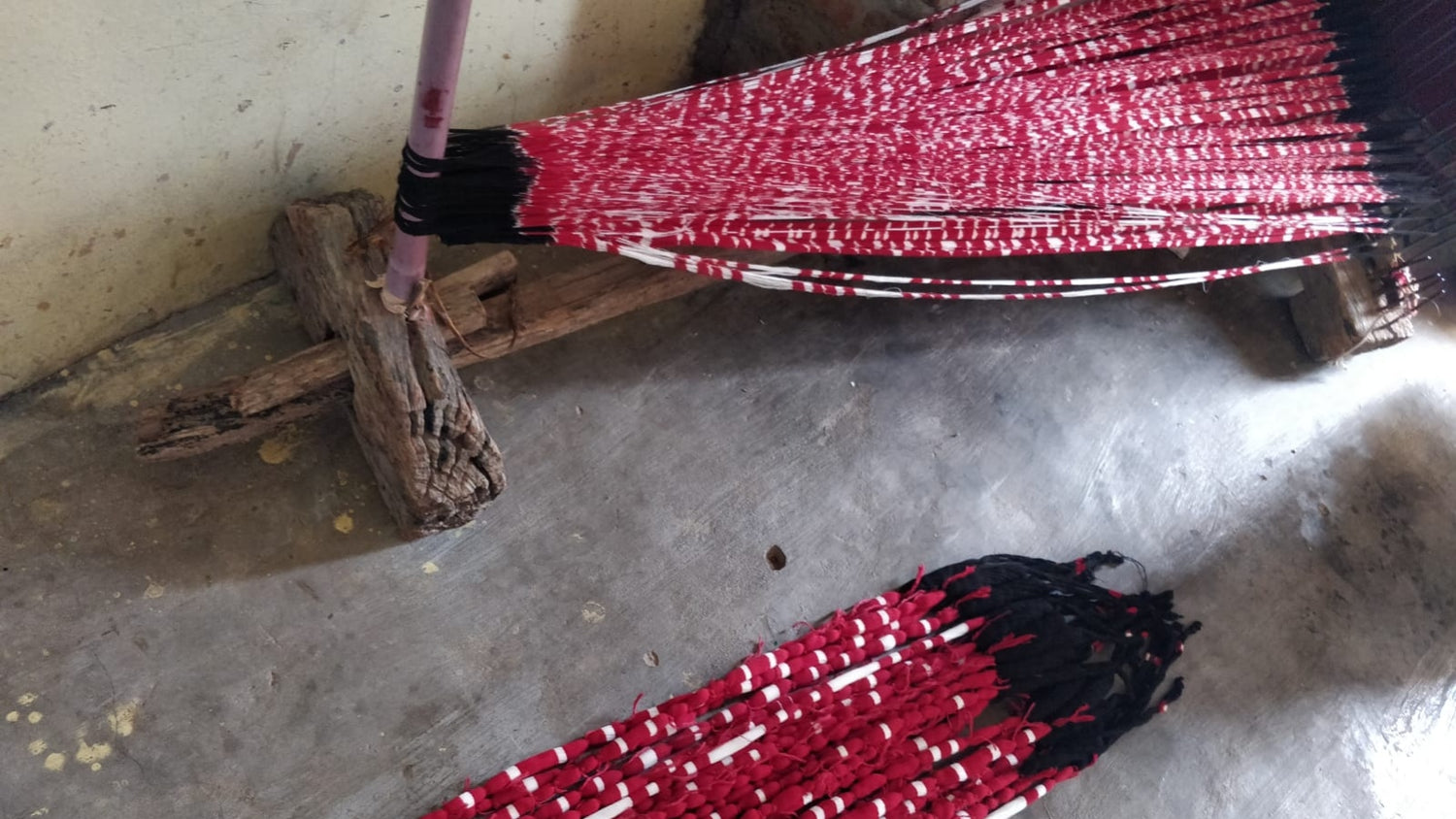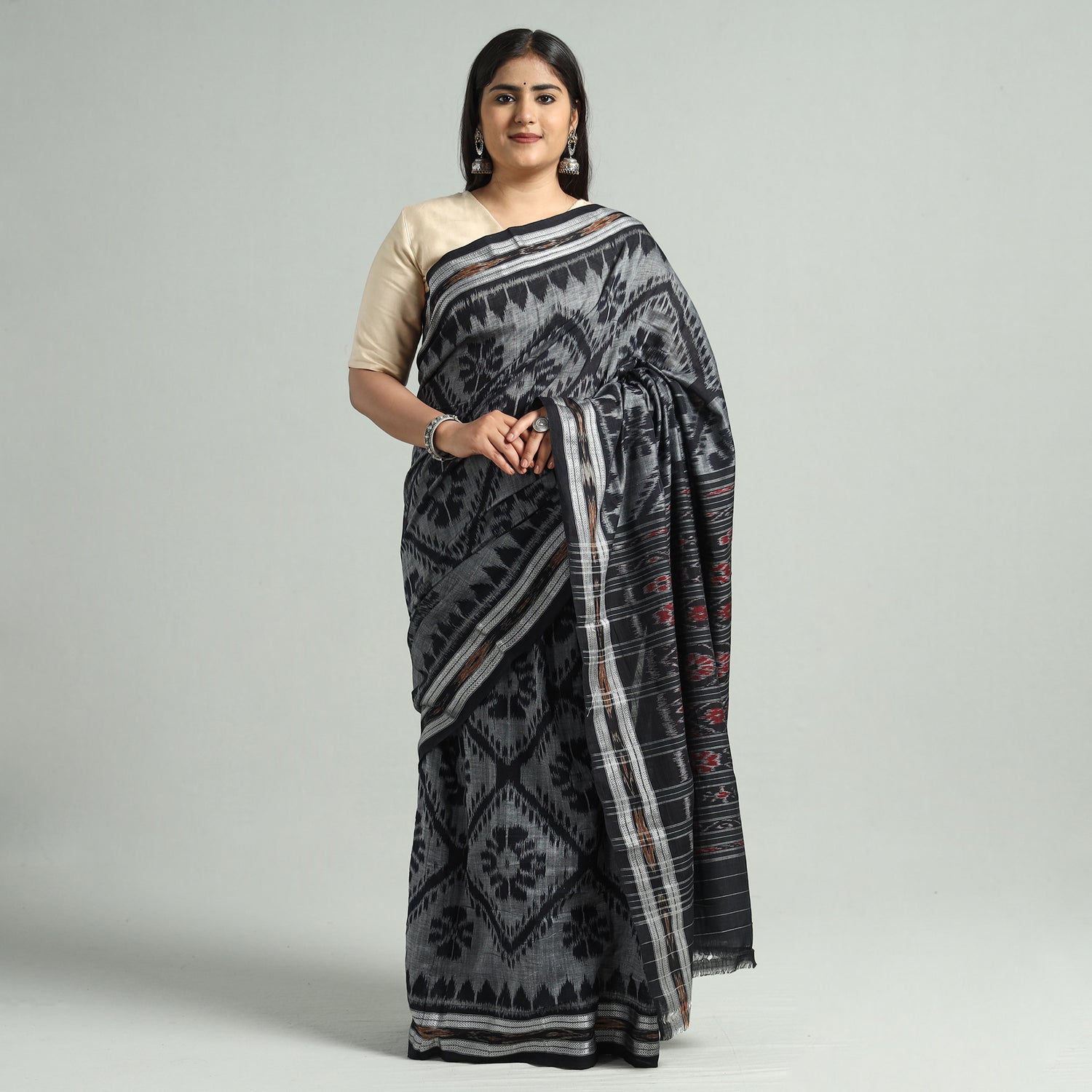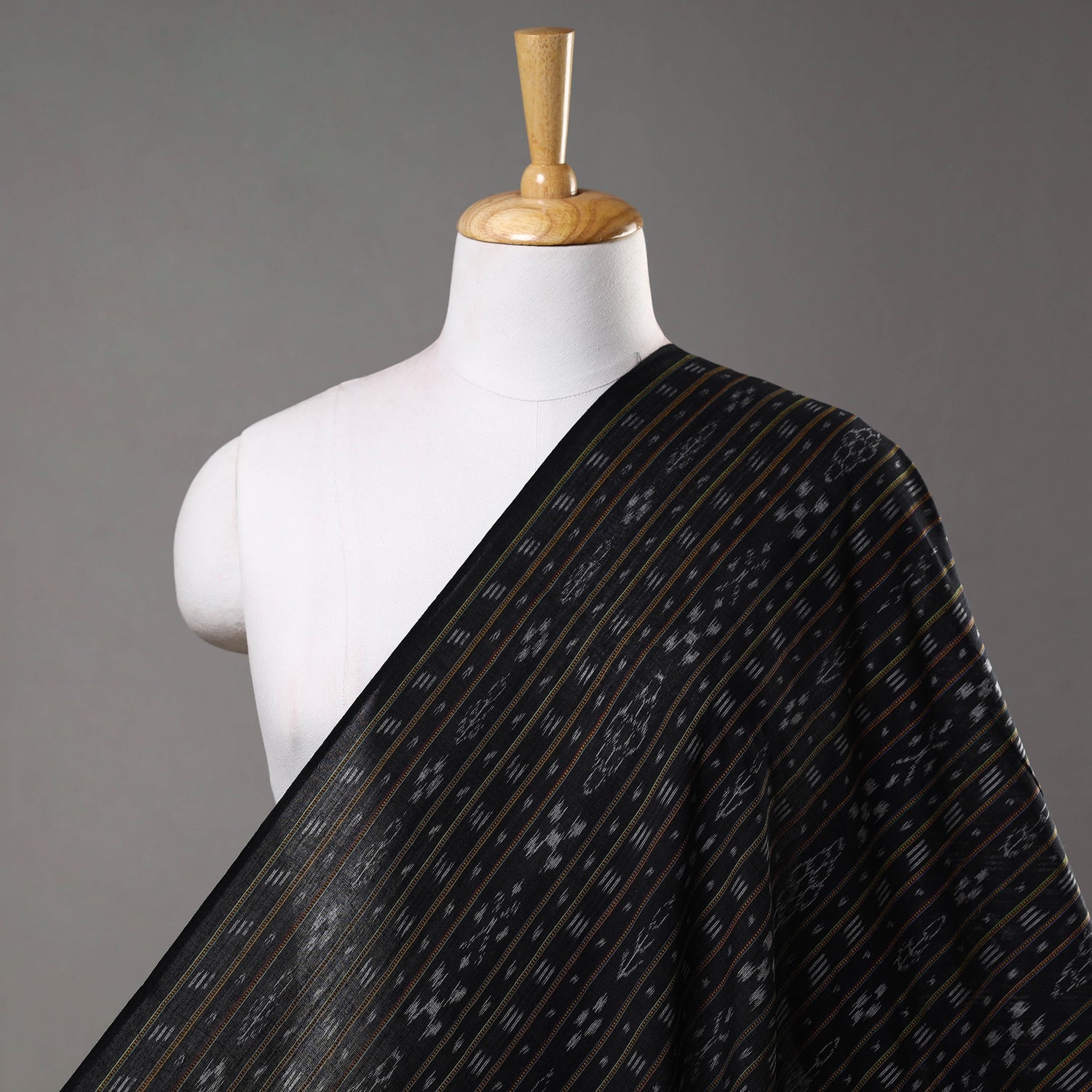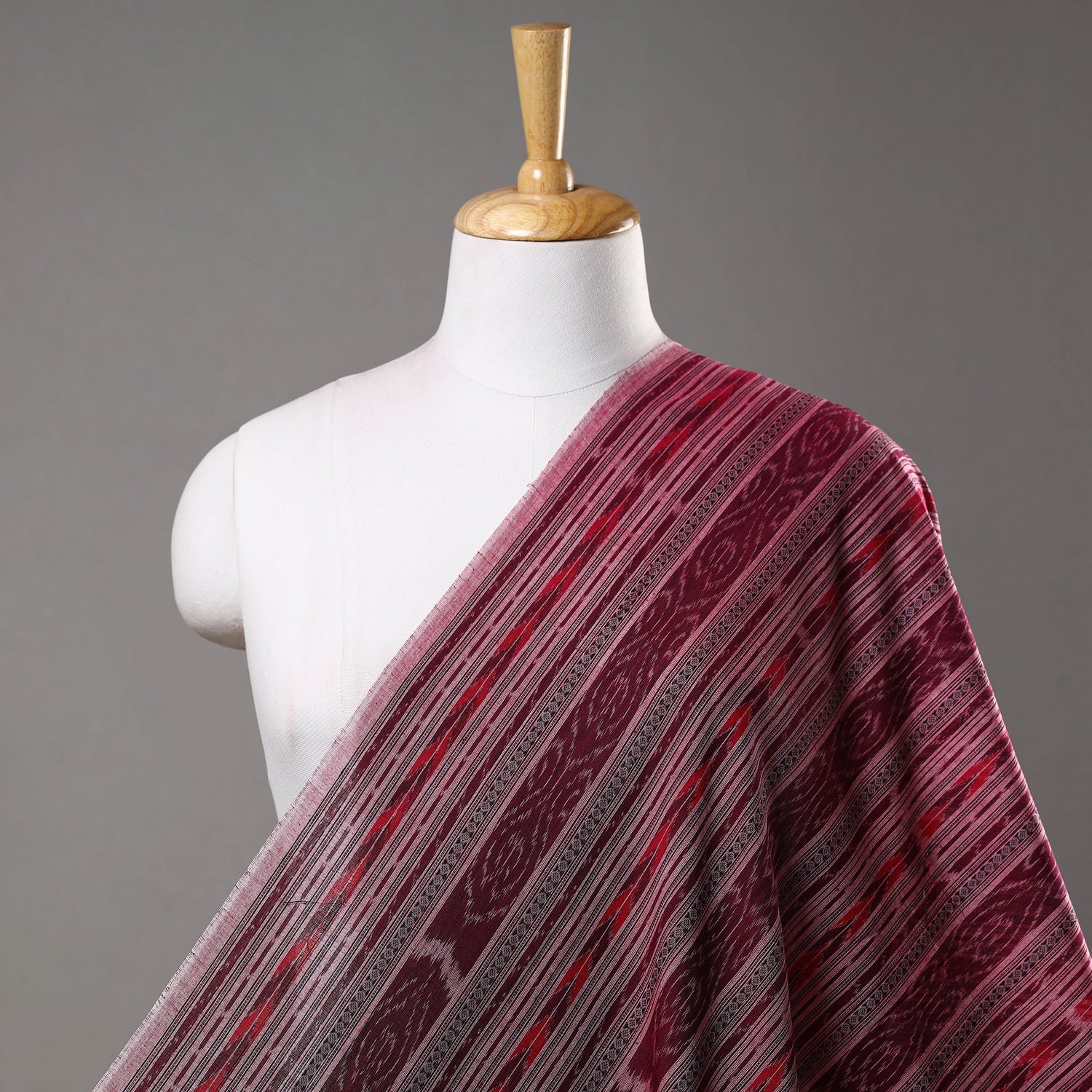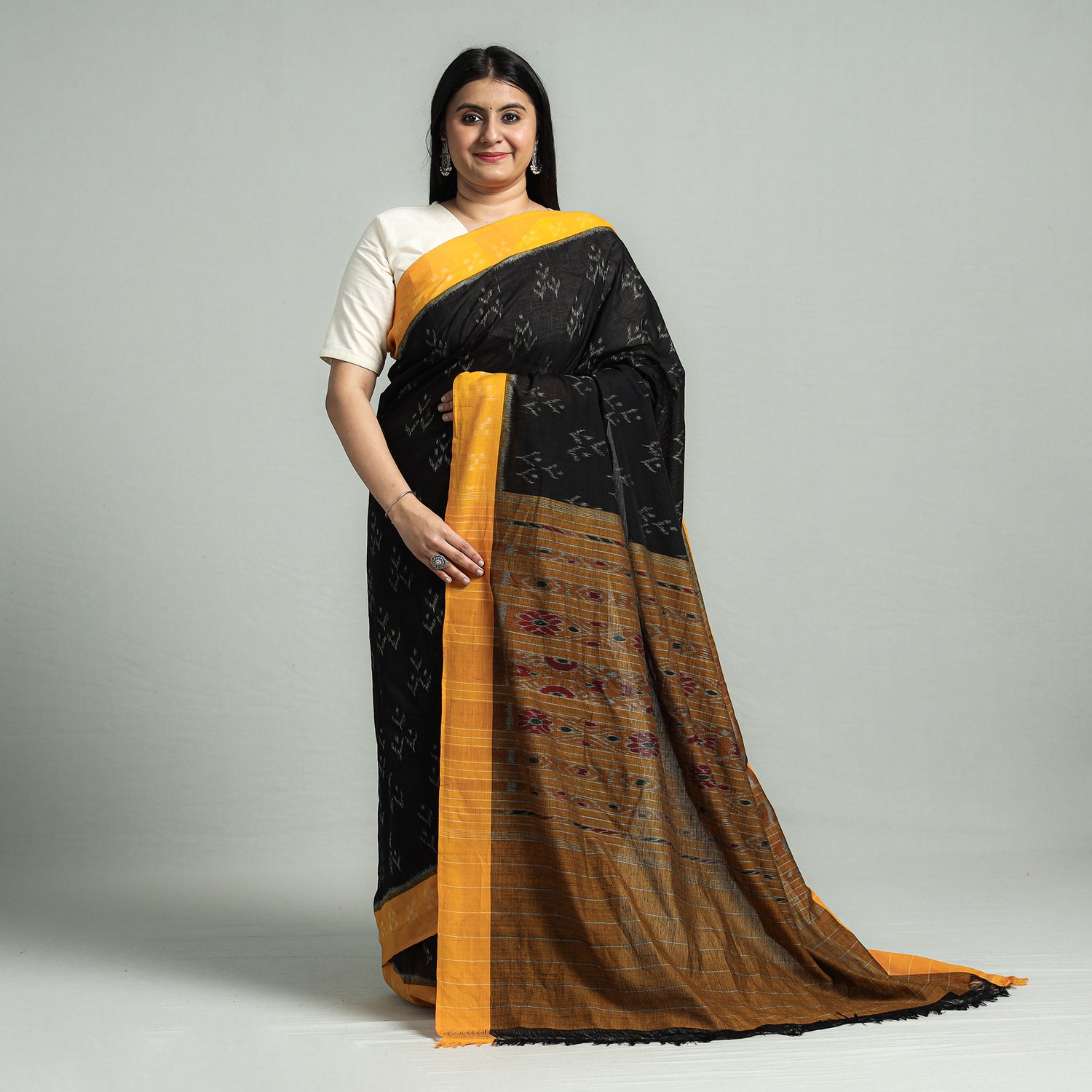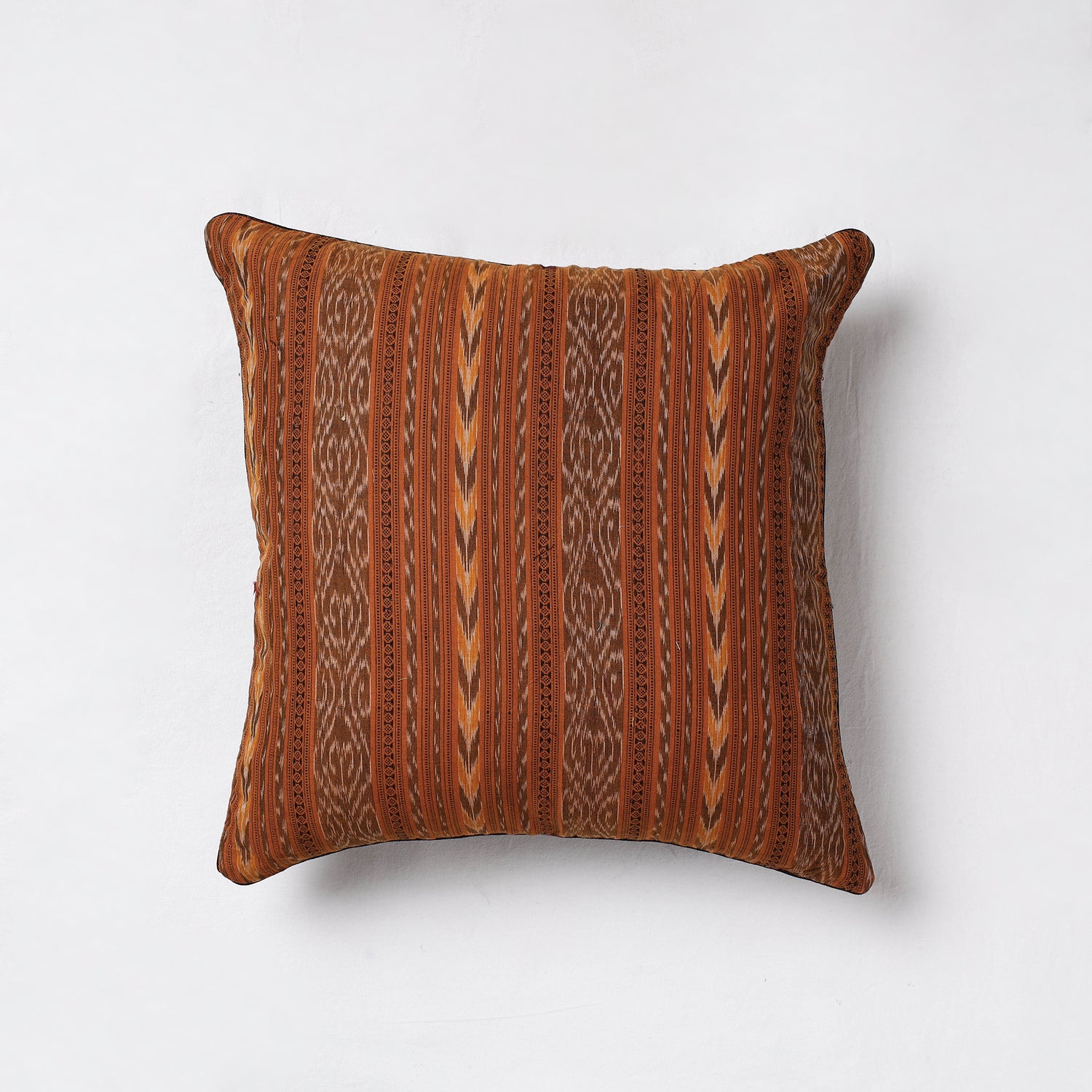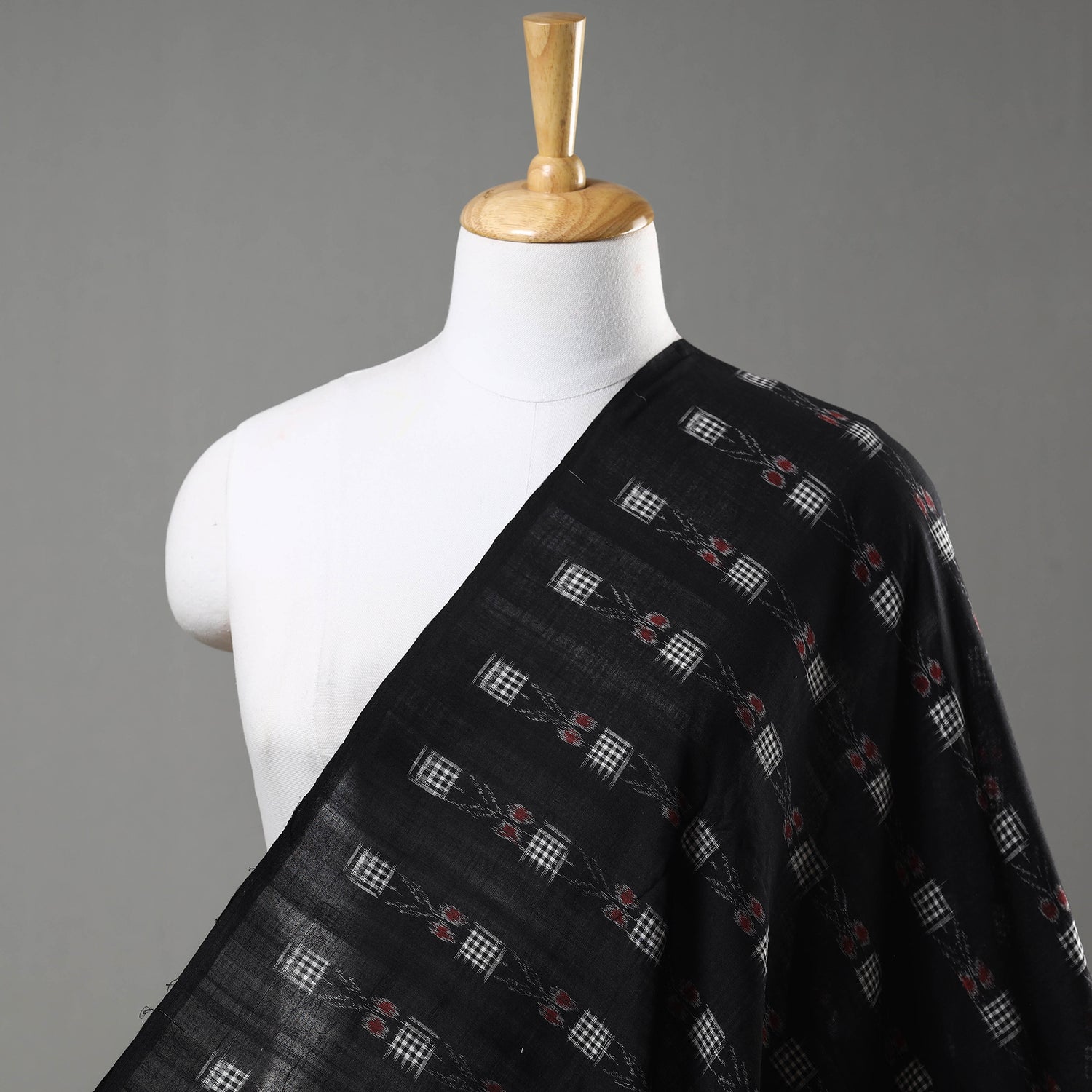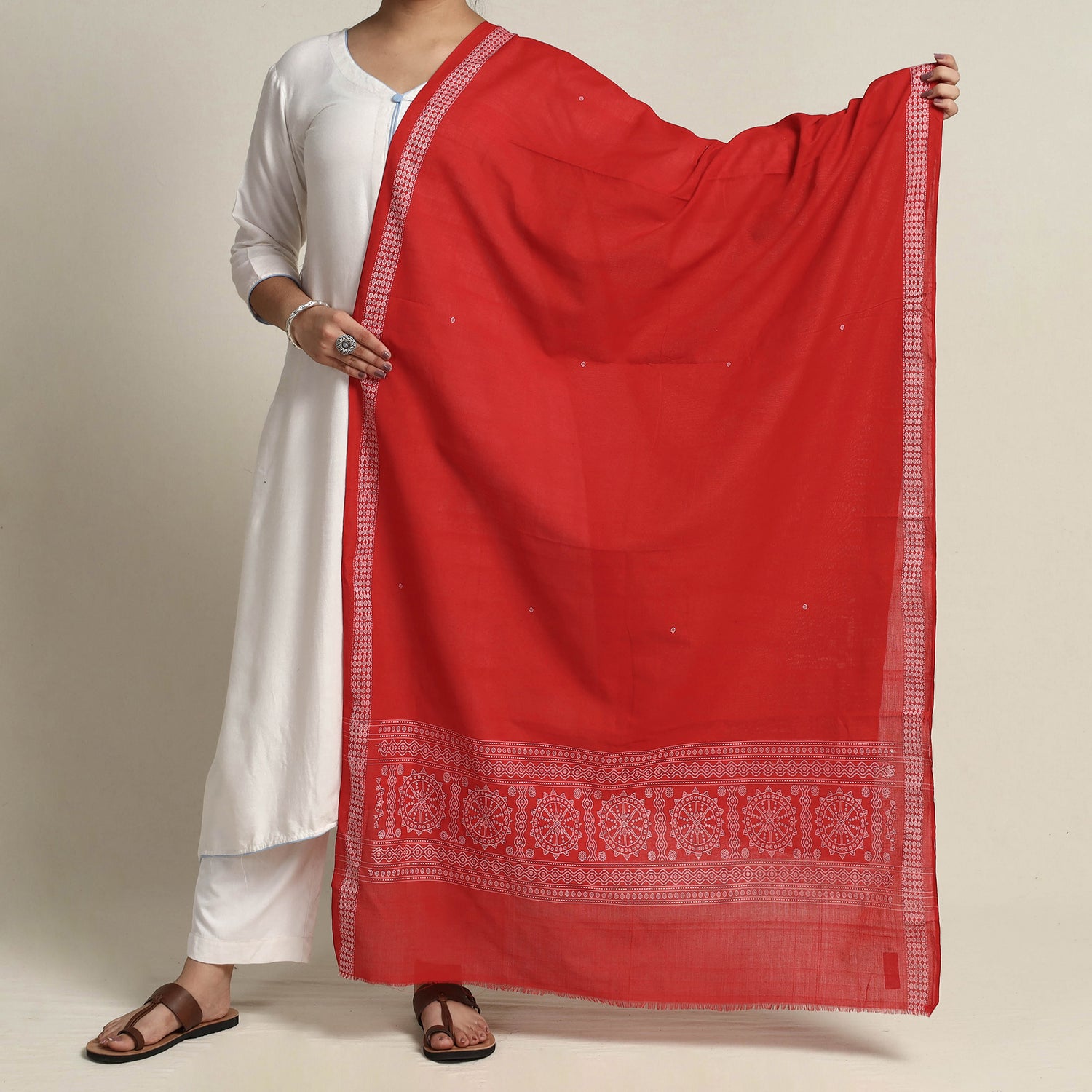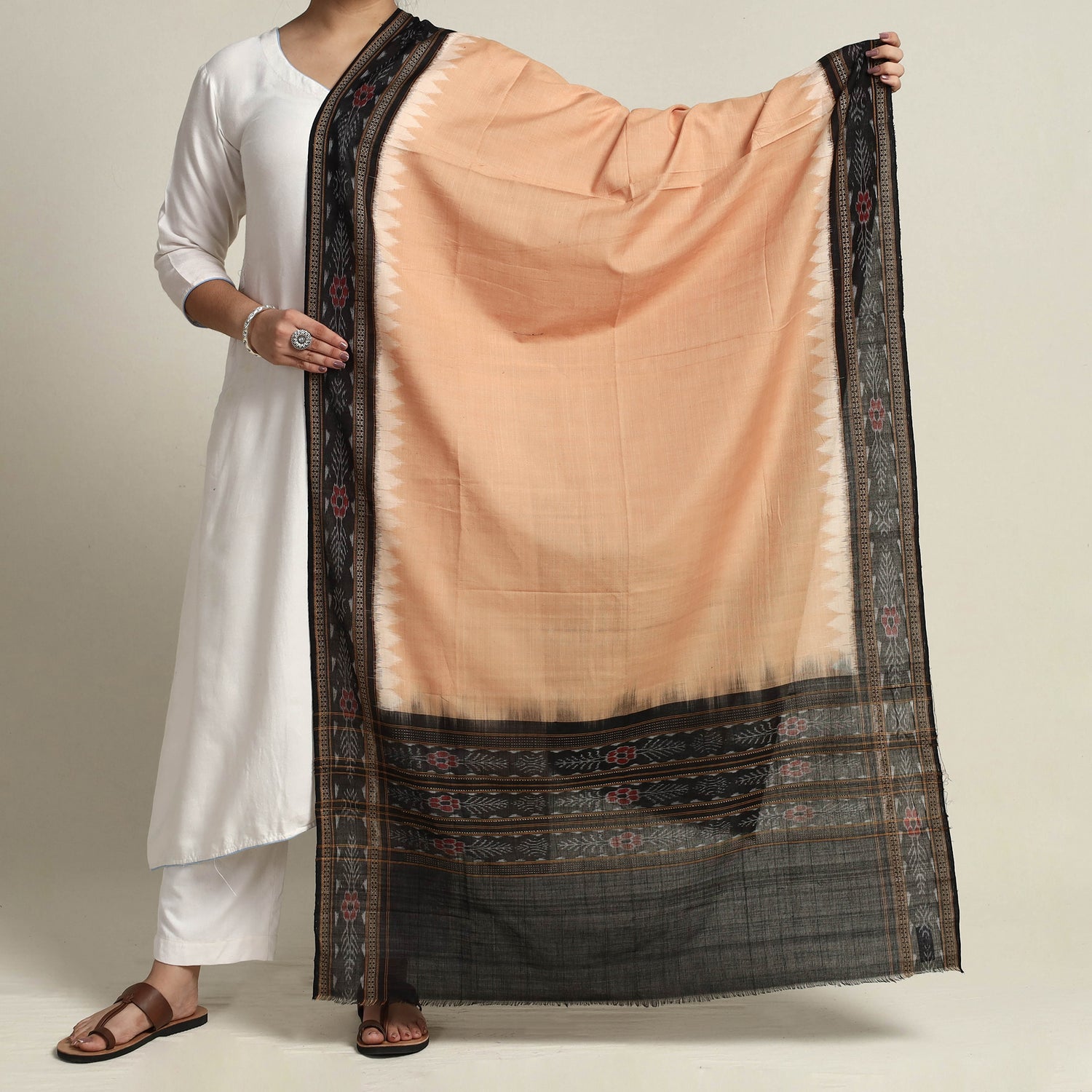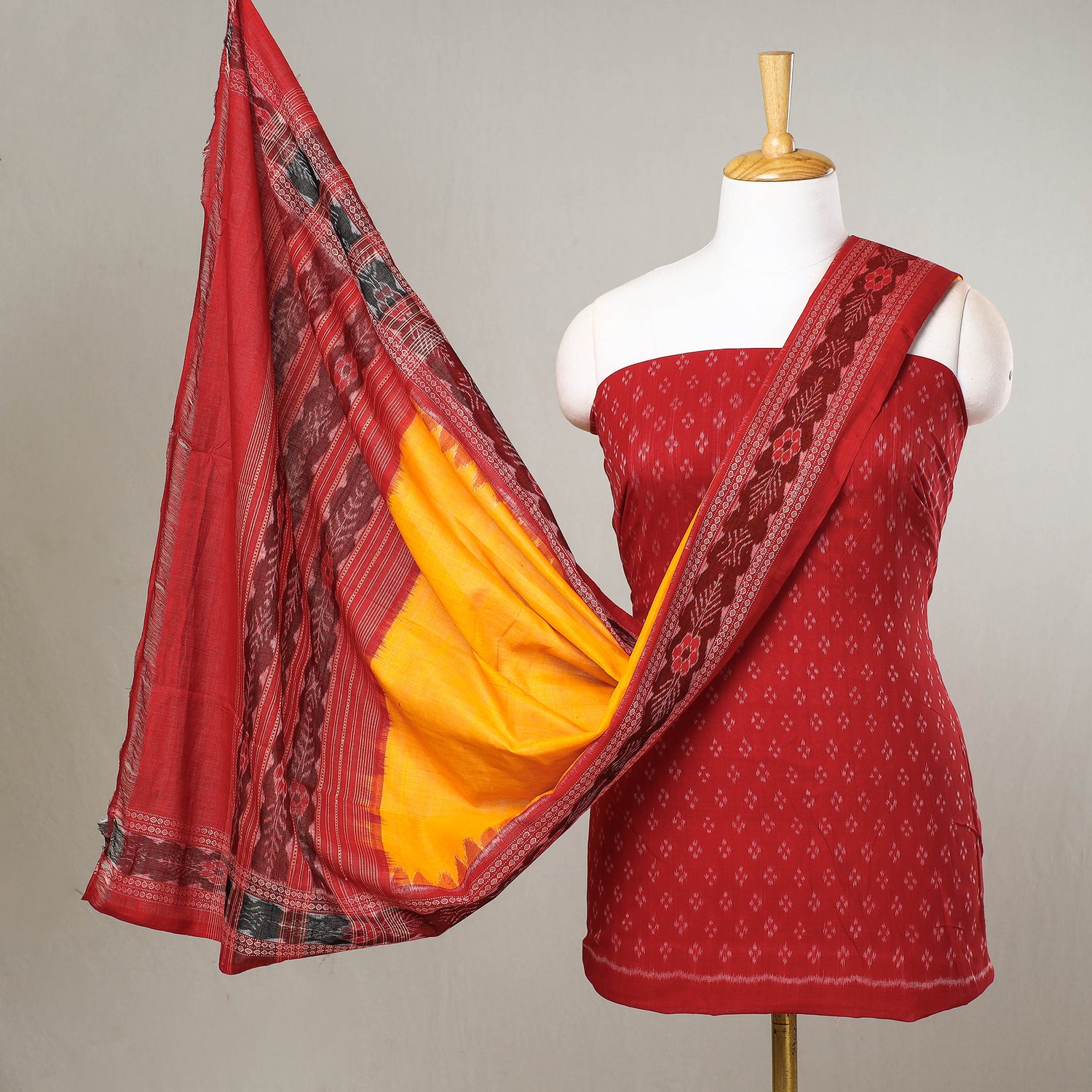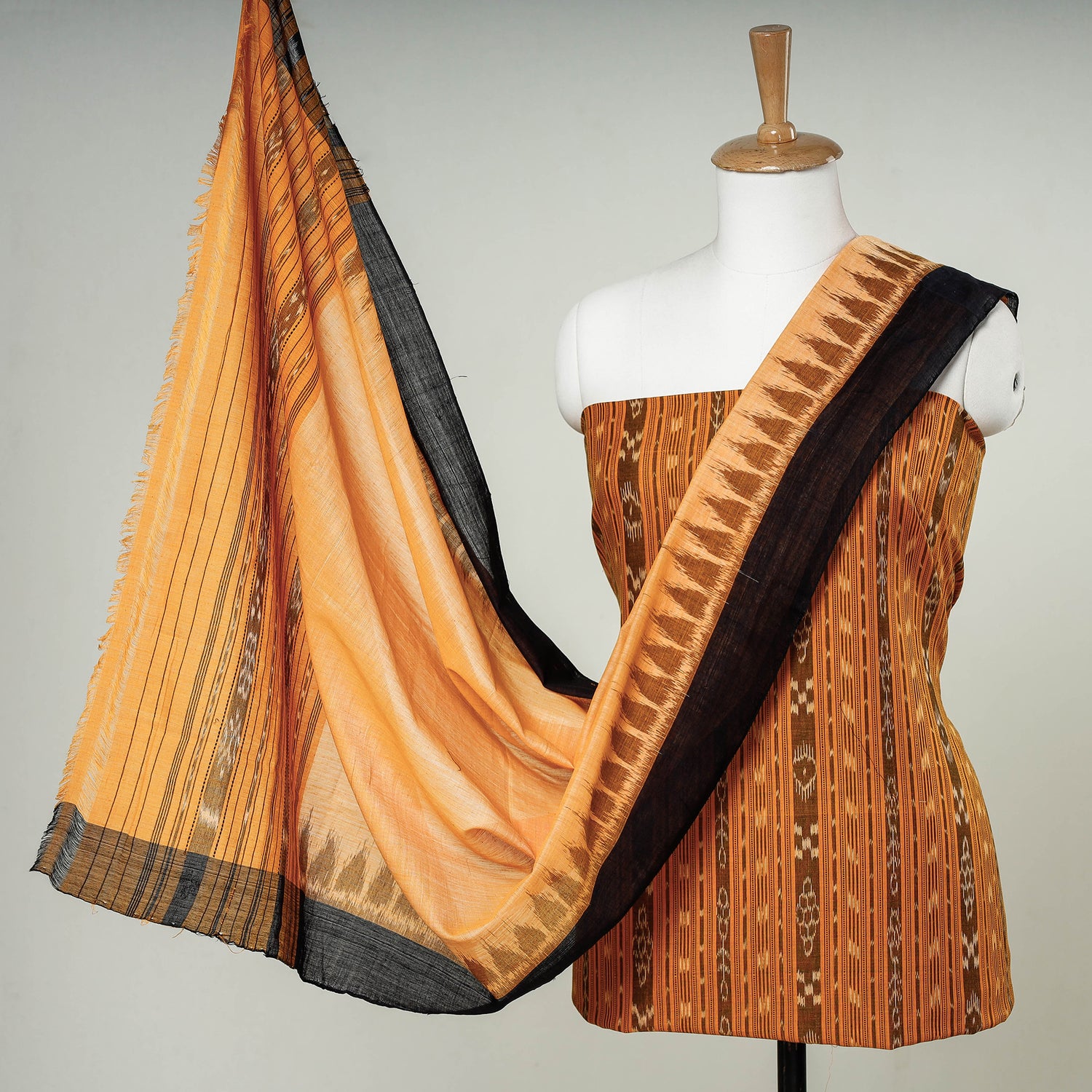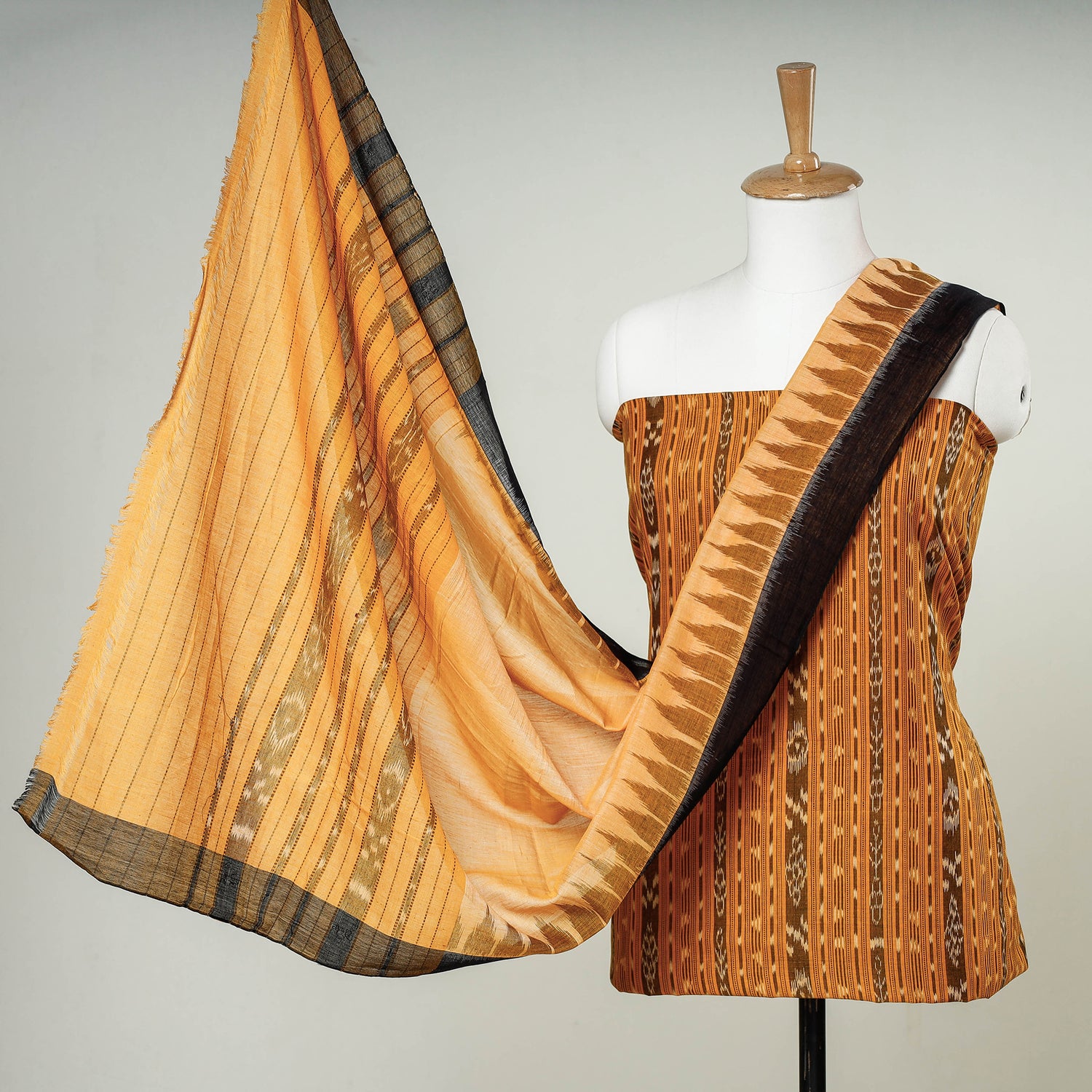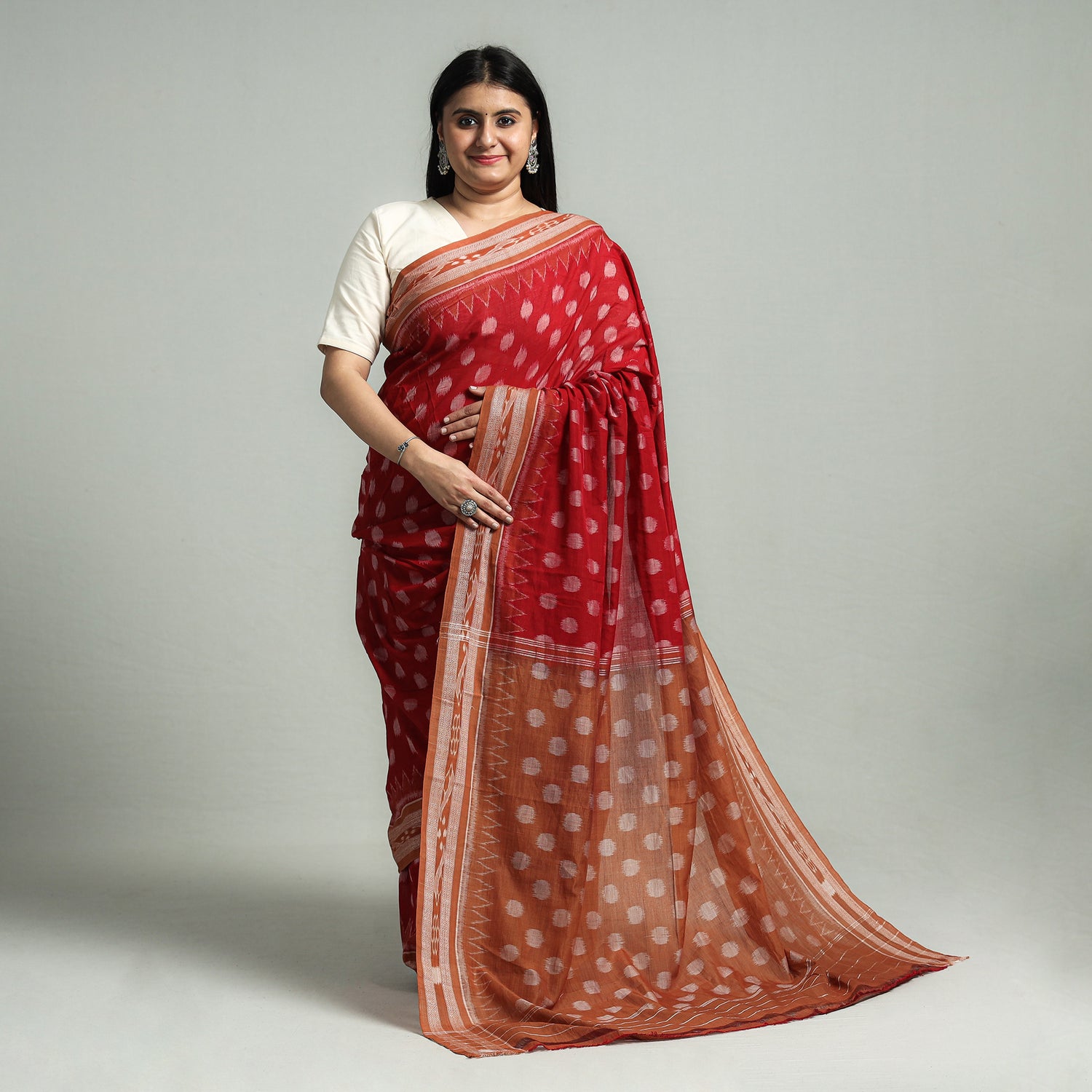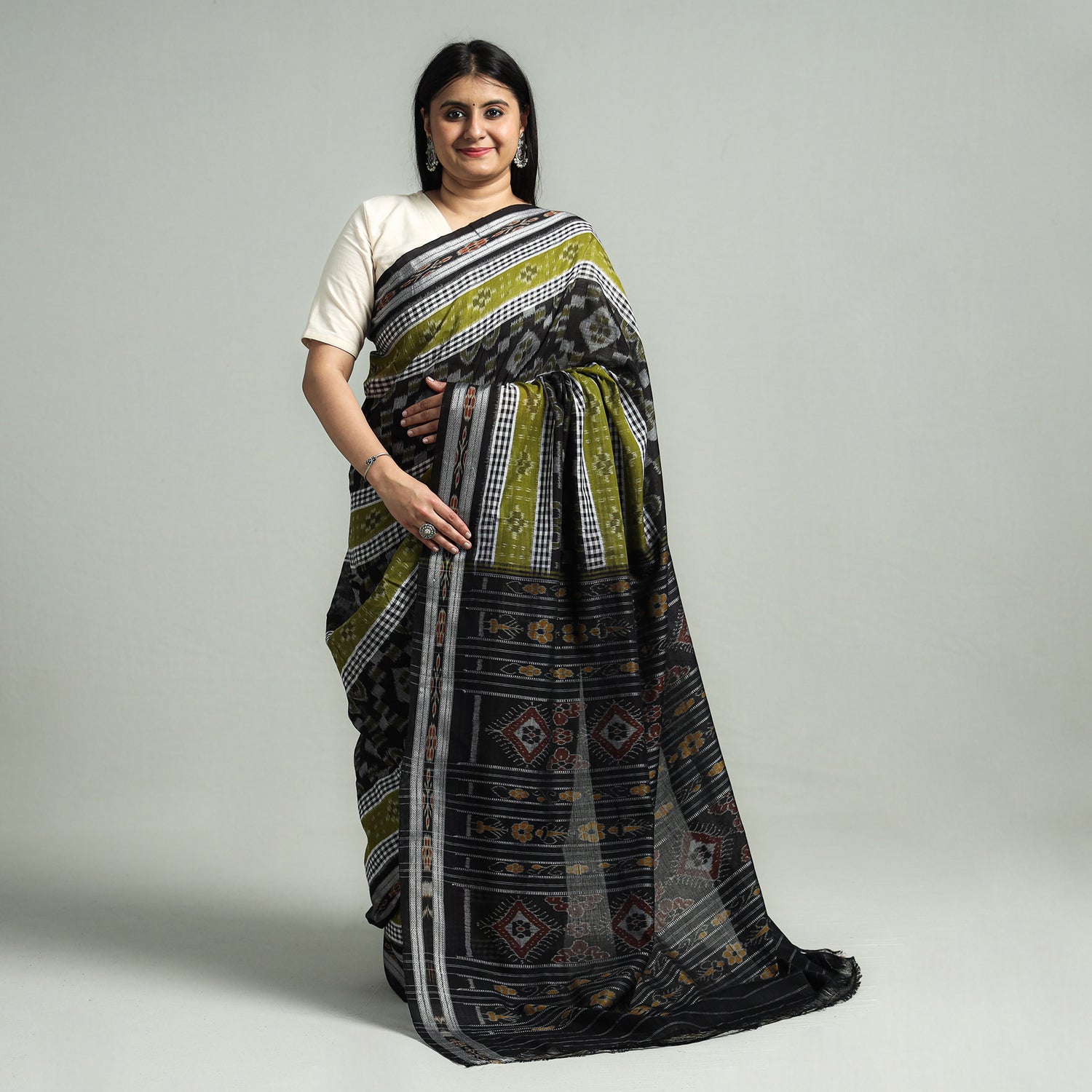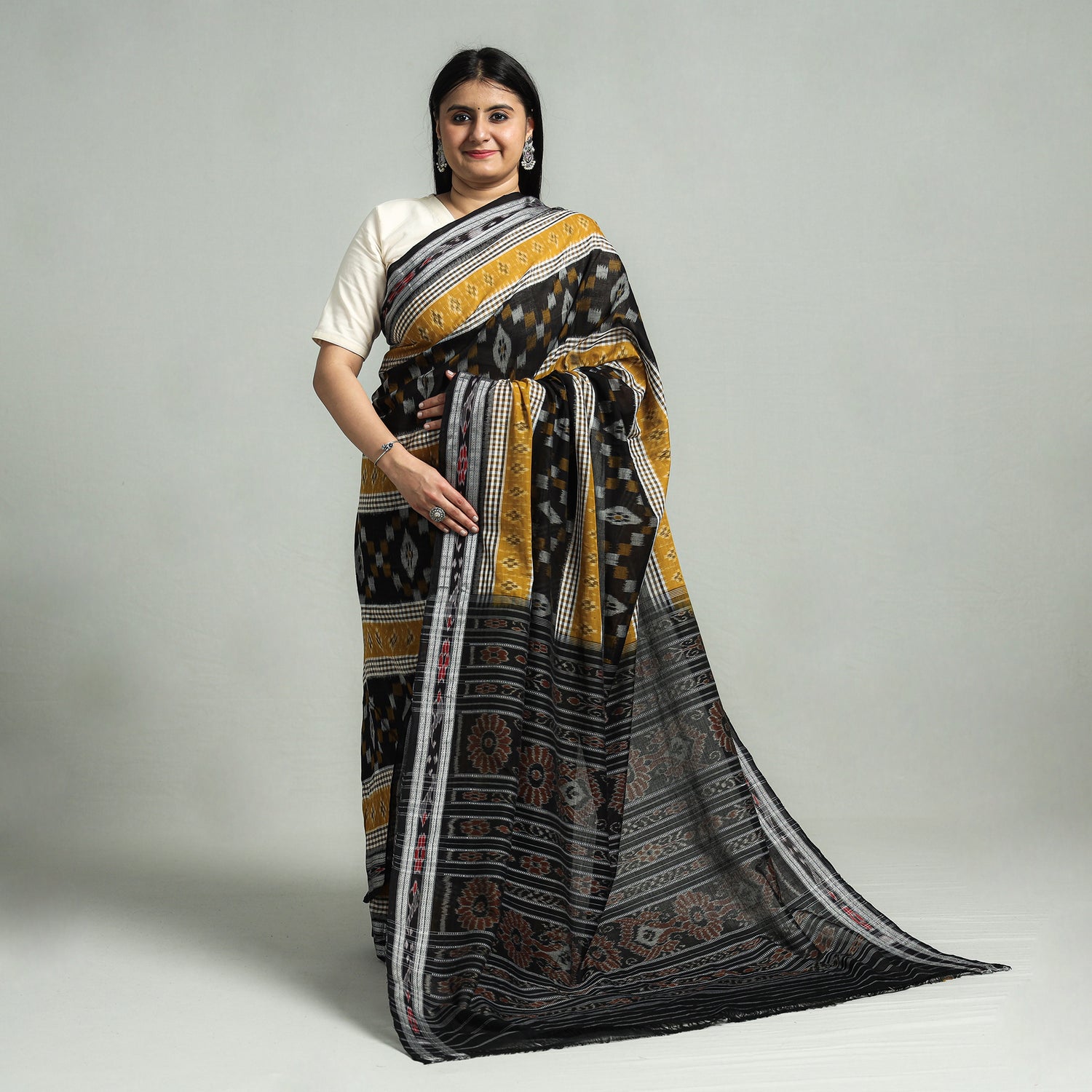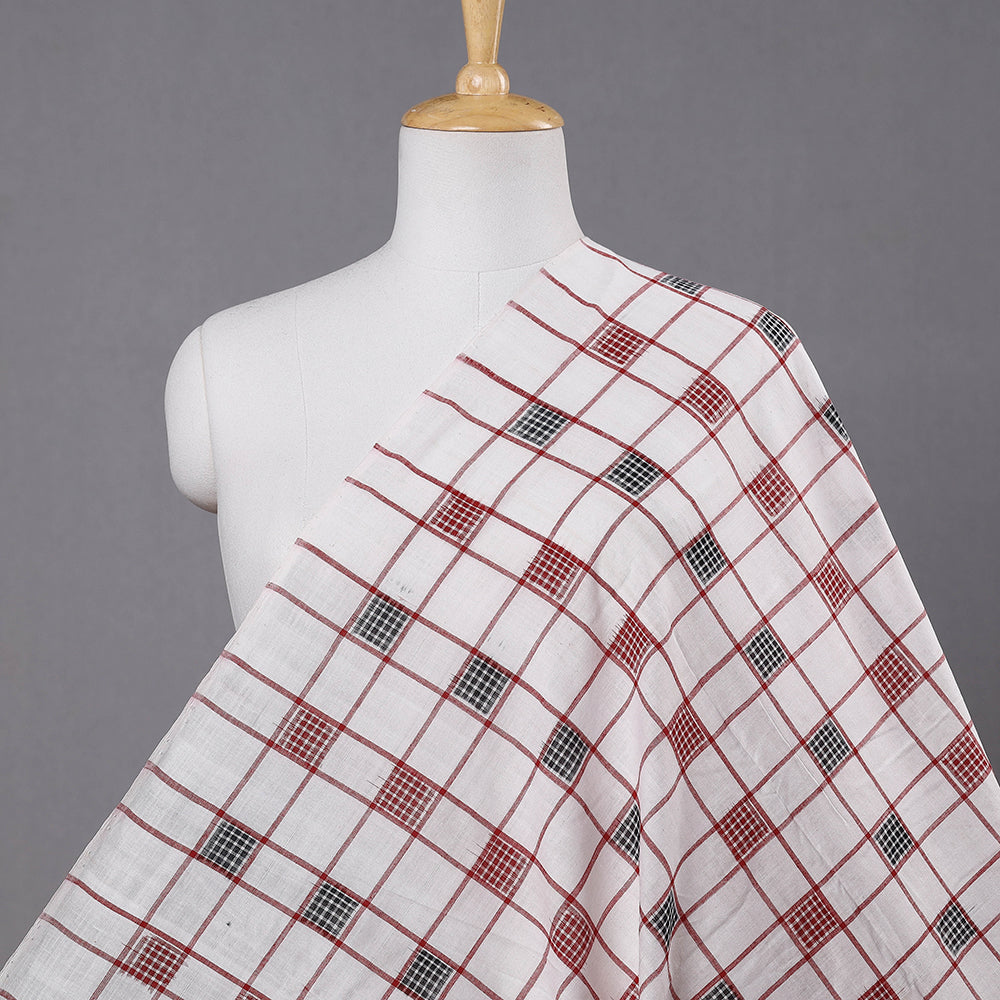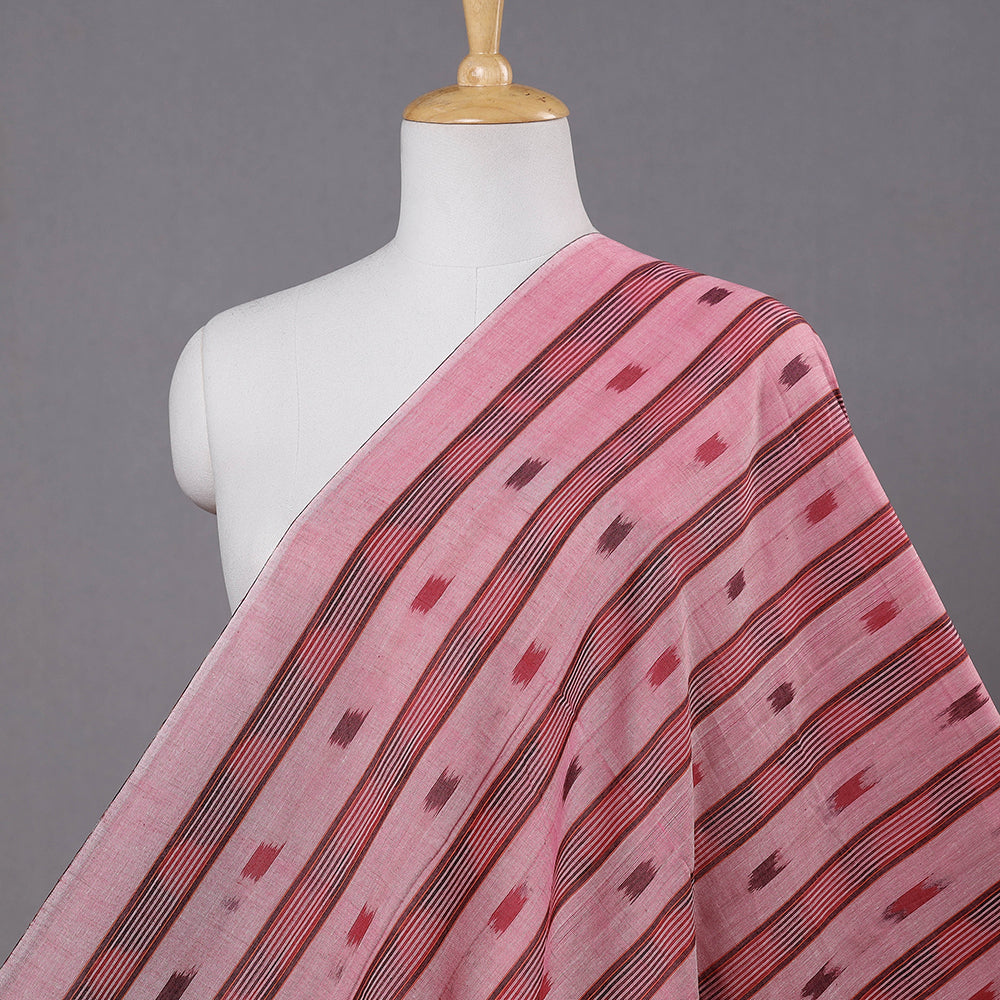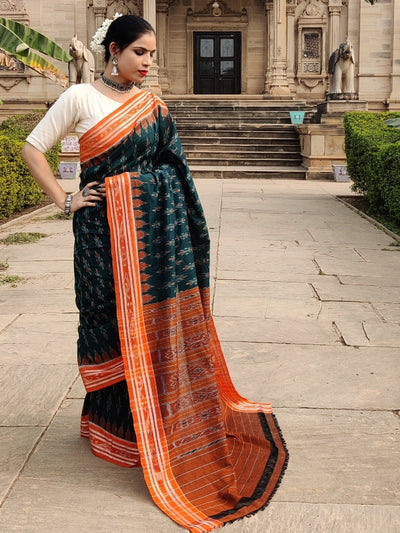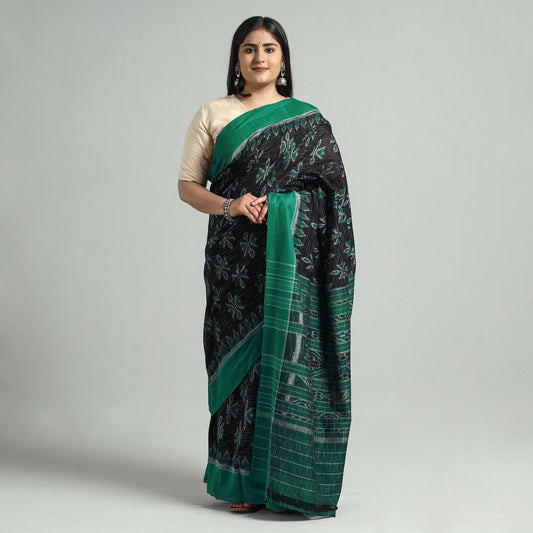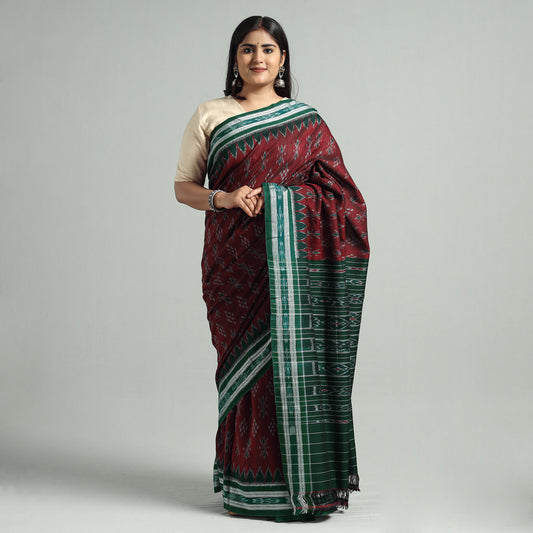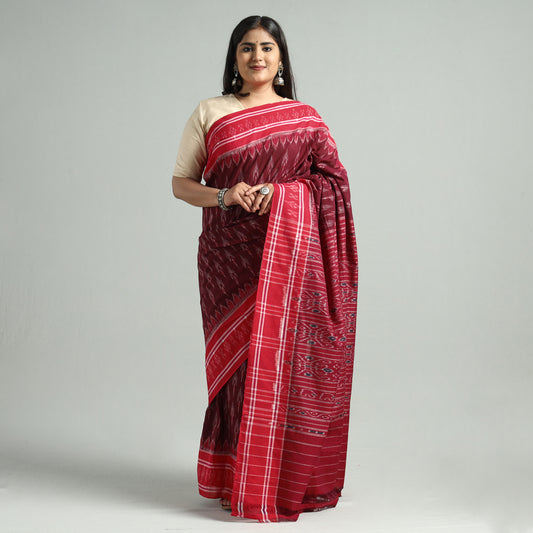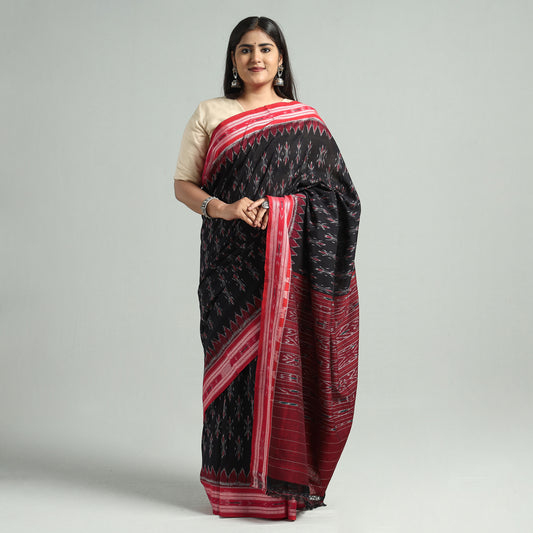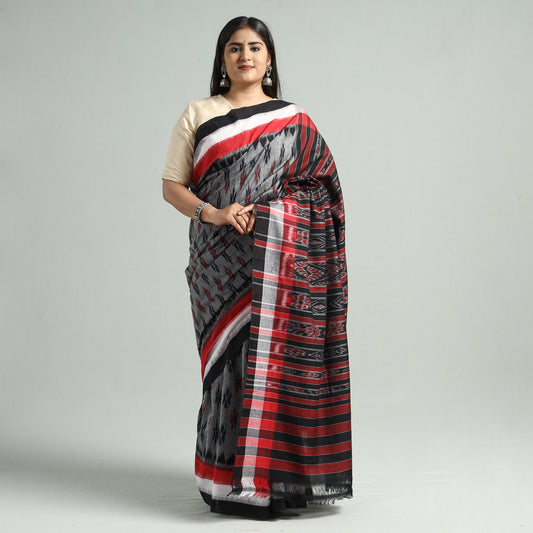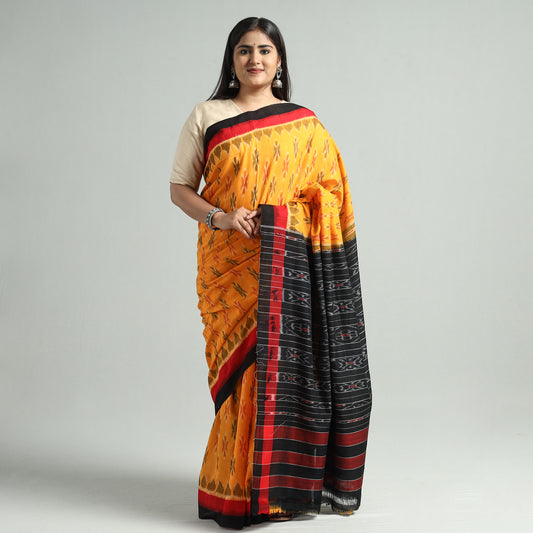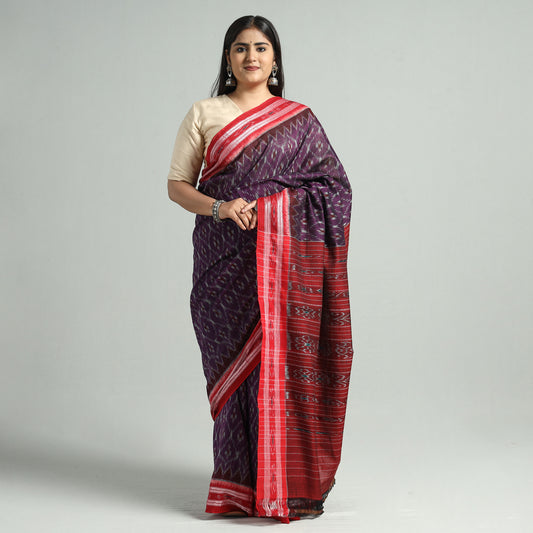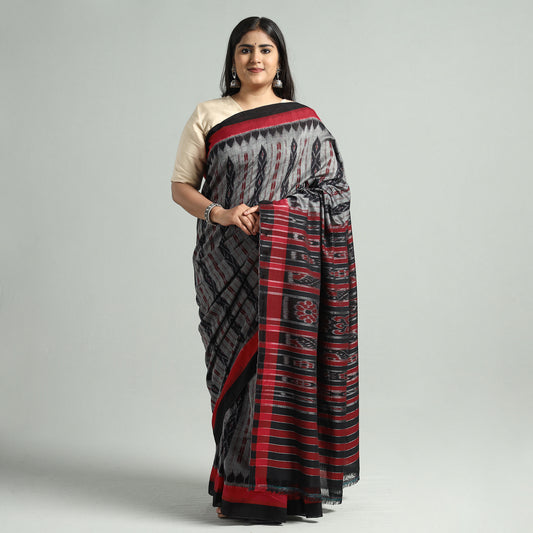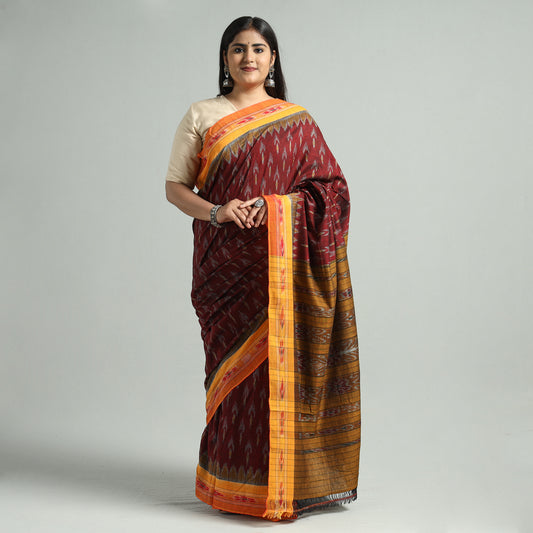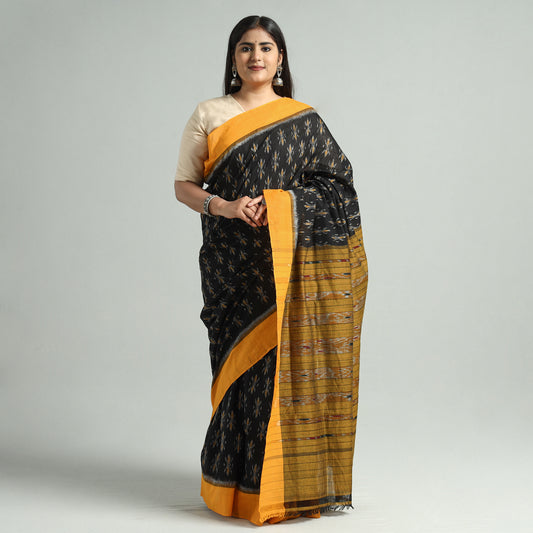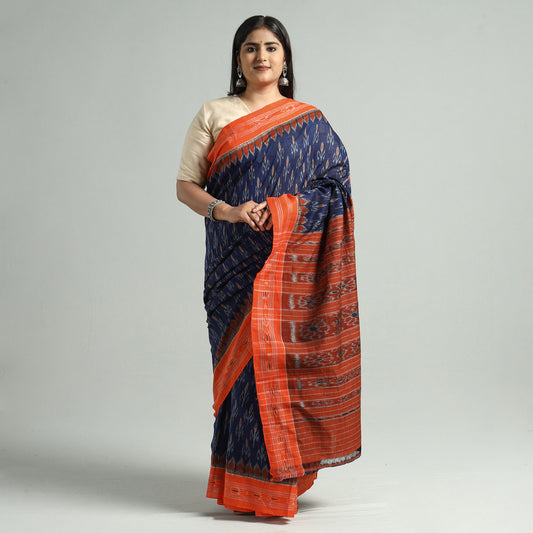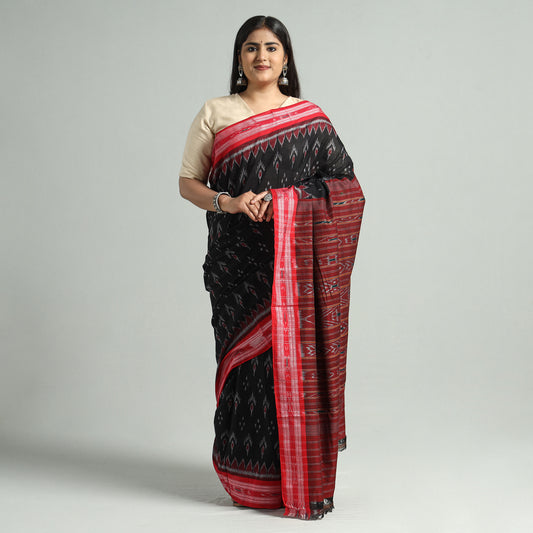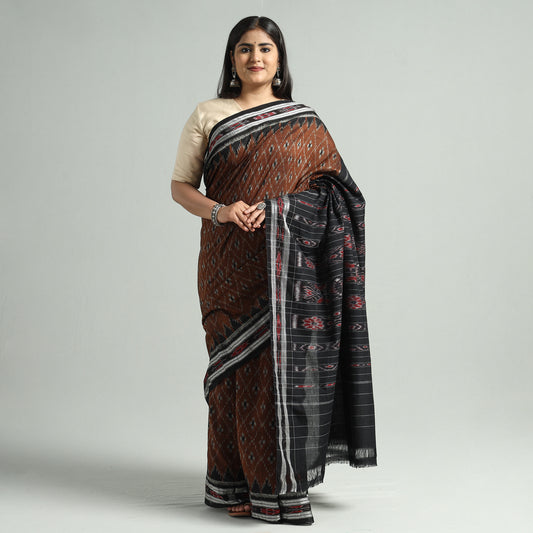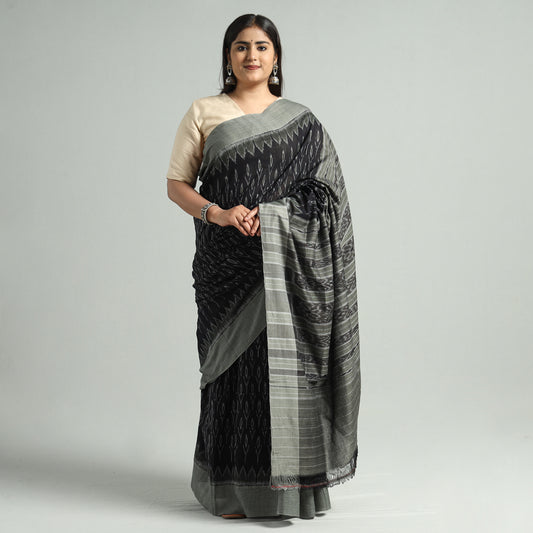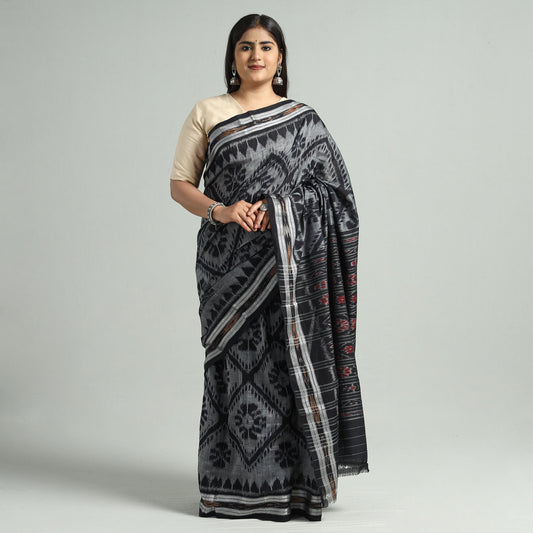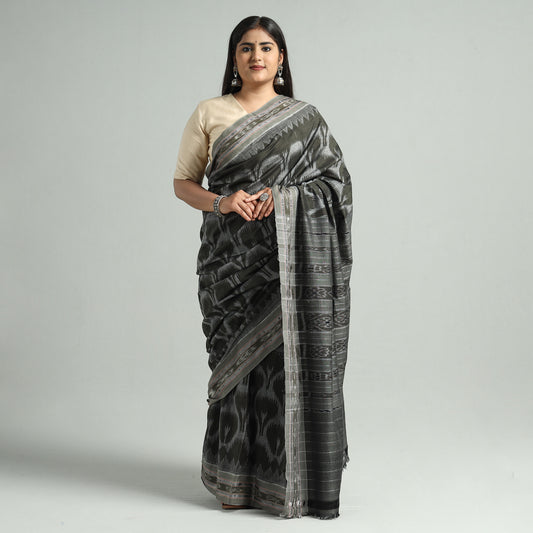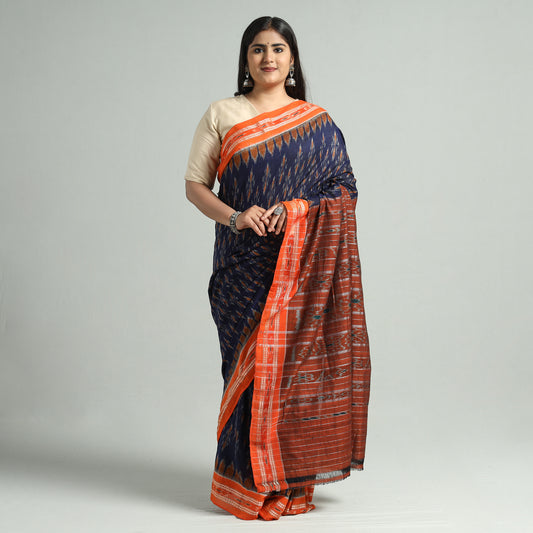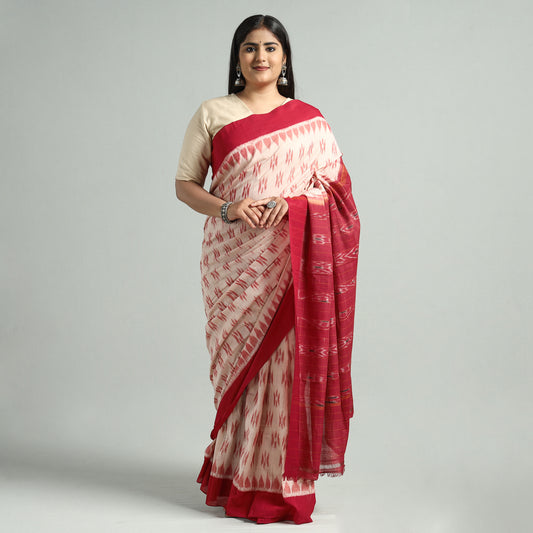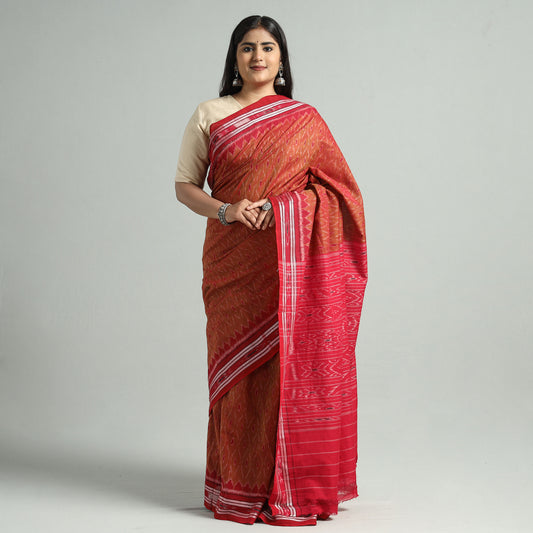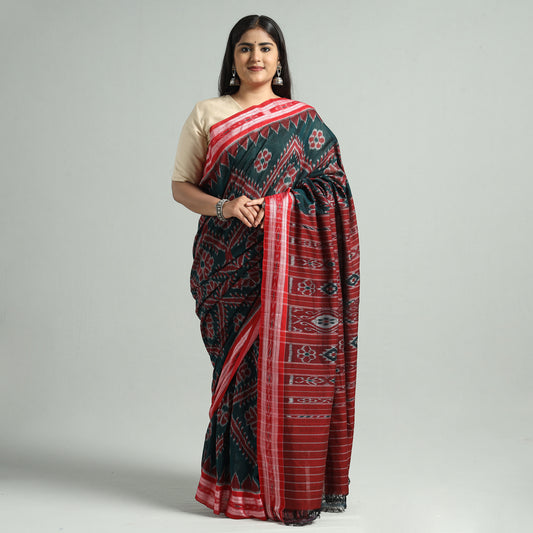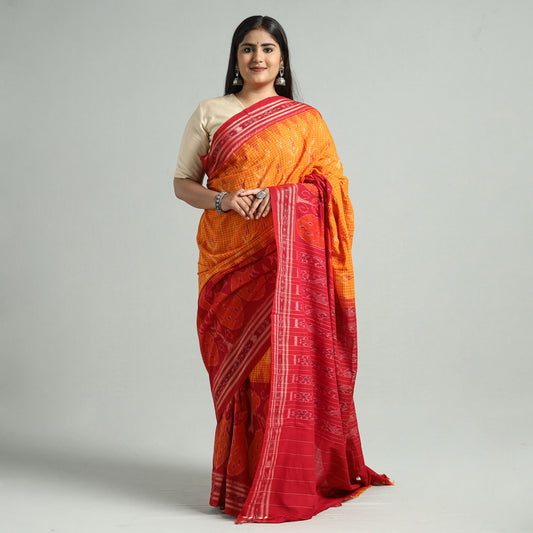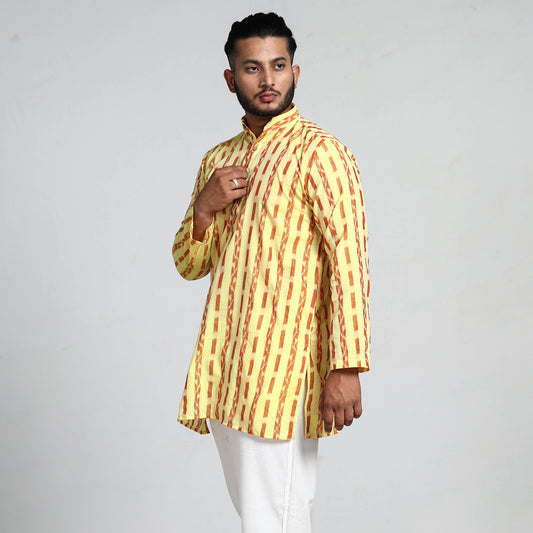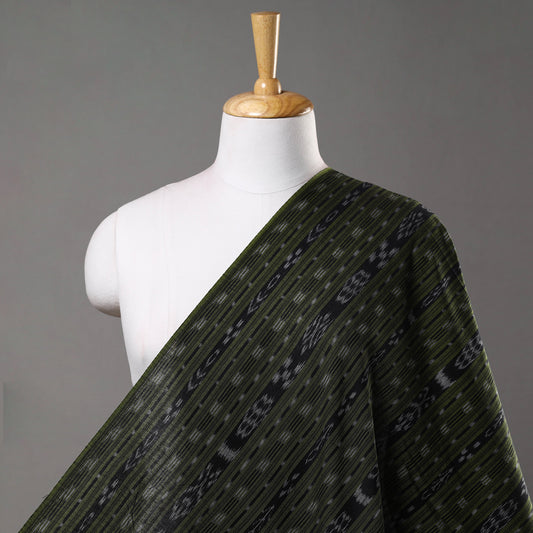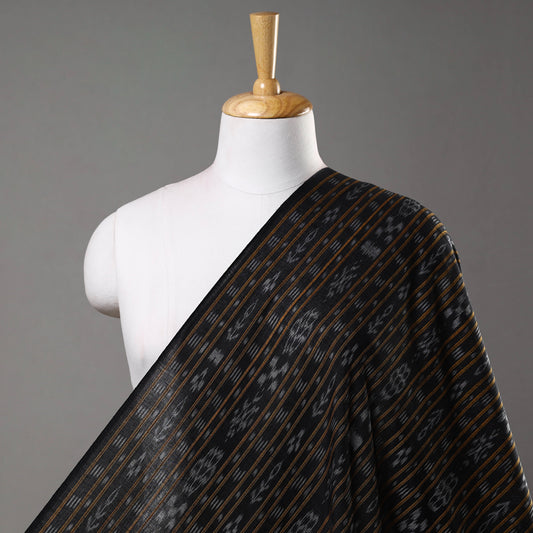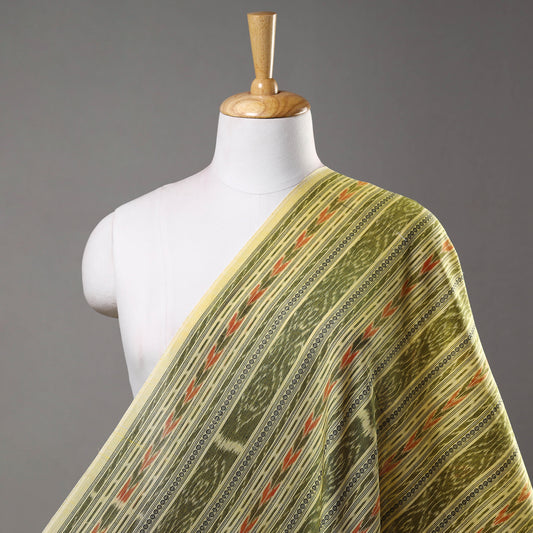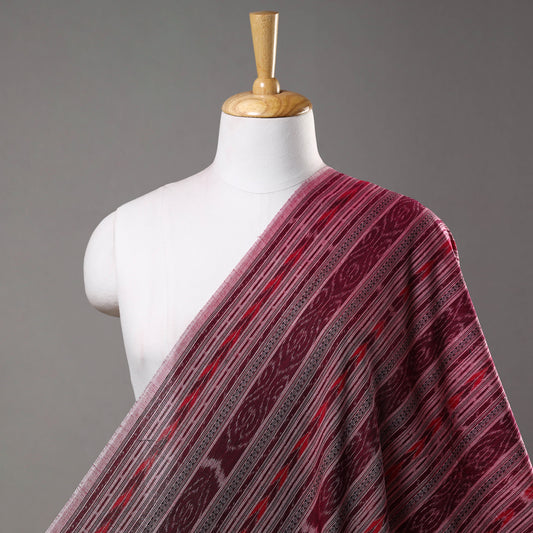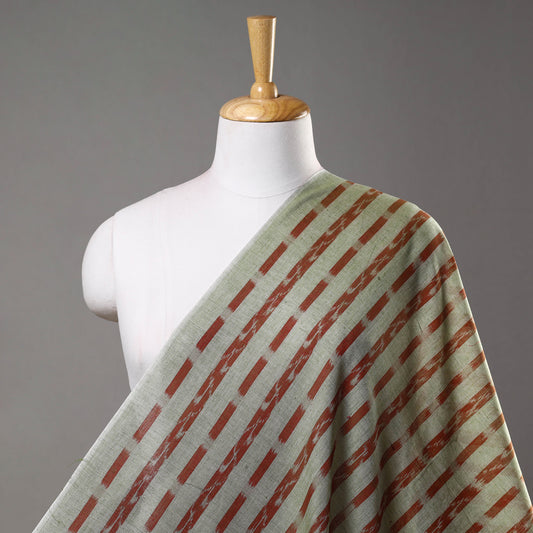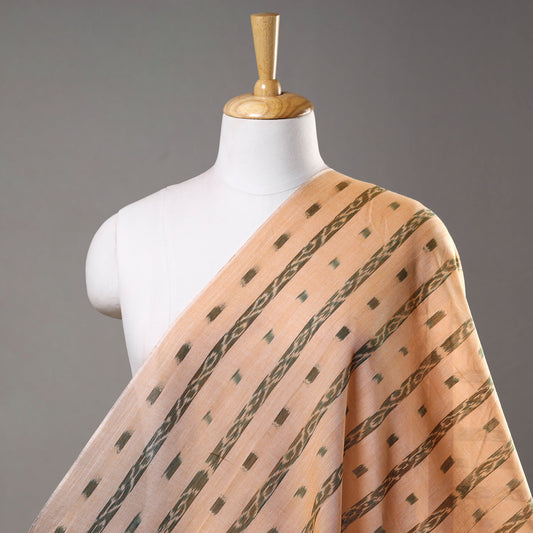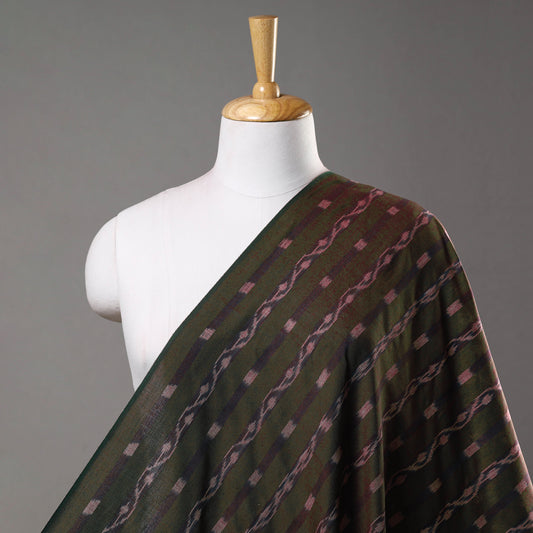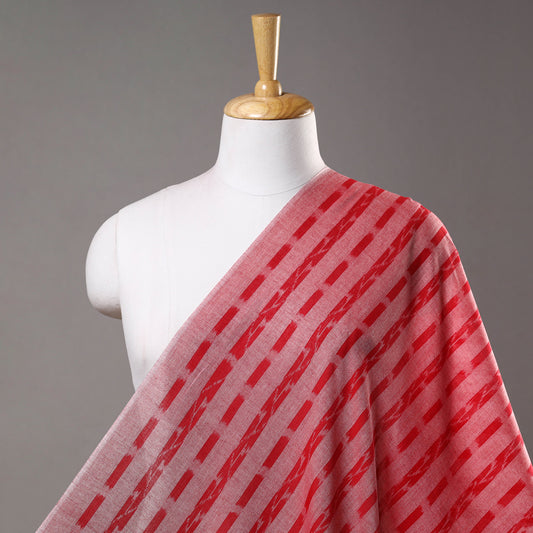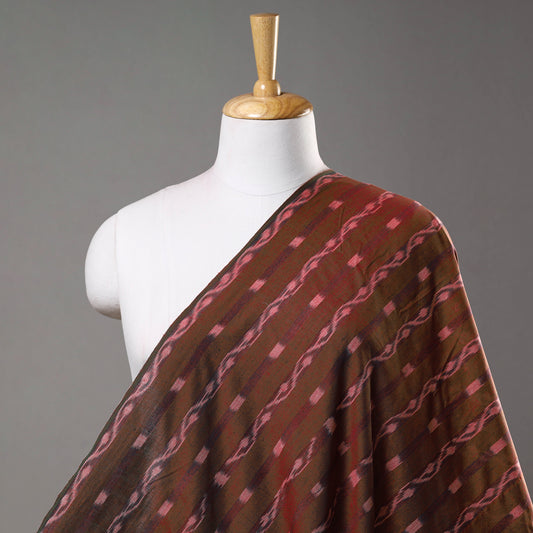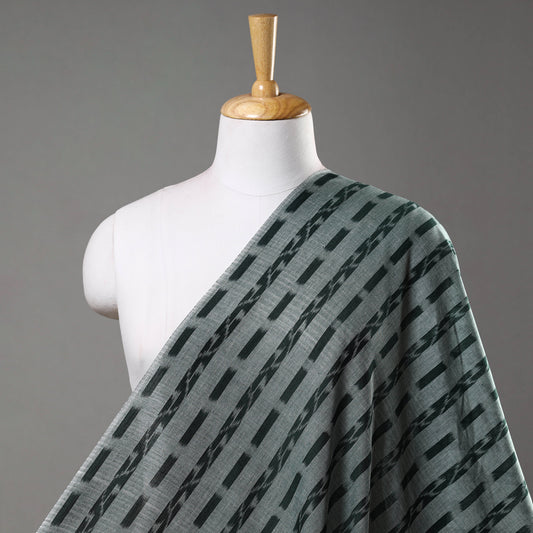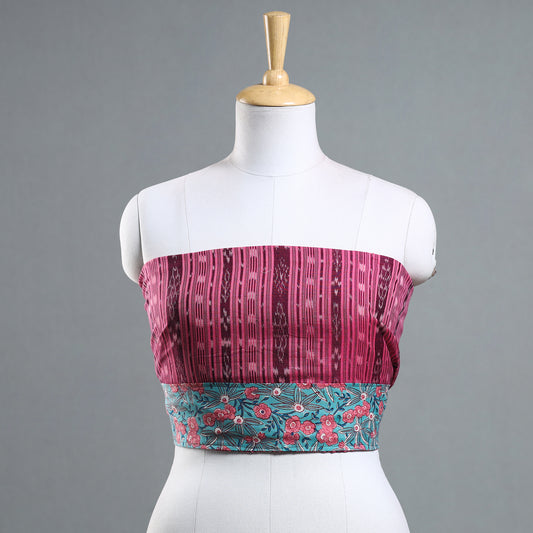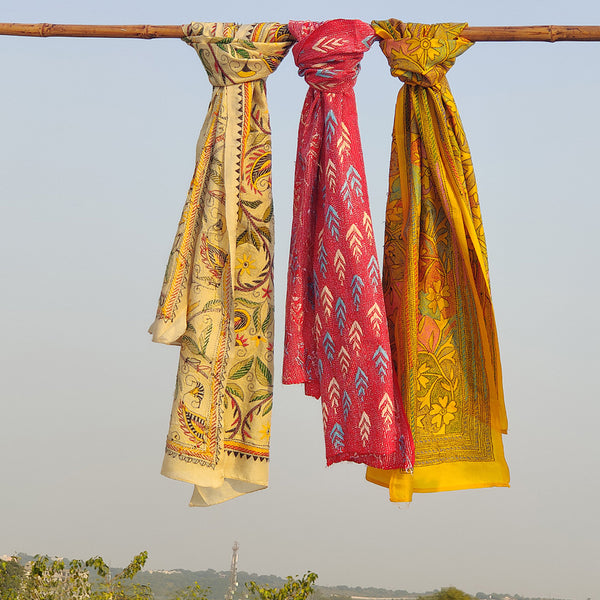Buy Gorgeous Suits With Sambalpuri Design
The Sambalpuri weaving style is a type of...
Buy Gorgeous Suits With Sambalpuri Design
The Sambalpuri weaving style is a type of handwoven Ikat design in which the warp and wefts are tie-dyes before weaving together to create a characteristic Sambalpuri pattern. iTokri hosts a wide variety of Indian crafts and fabrics, which are available on our website in their authentic form. One of these traditional Indian fabric designs includes the Sambalpuri weave, which looks classy, elegant and sophisticated for any occasion. It originates from the Sambalpur district of Odisha and is currently produced by other districts of this state, such as Balangir, Bargarh, Boudh and Sonepur. These Sambalpuri weavers put in their skills and expertise to create beautiful Sambalpuri art involving various motifs like shells, wheels and flowers, which are symbolic towards Odisha culture and history.
At iTokri, you can find authentic and genuine Sambalpuri design garments and fabric, like the Sambalpuri suit materials that are available in a variety of colours. It is made with handloom cotton fabric that feels soft and breathable and looks amazing with the original Sambalpuri weaving method. The Sambalpuri process involves the degumming of the raw yarn after which it is tied in such a way as to get the desired pattern. Then it is subjected to dyeing or colouring and then the warp and weft process is done. Lastly, the Sambalpuri weaving is done to create the perfect Sambalpuri product. iTokri’s collection of Sambalpuri designs includes suit materials as well as Sambalpuri fabric, which can turn into any style you want. A Sambalpuri top design would also look stunning with this weave. iTokri offers a wide variety of traditional Indian designs, fabrics and handicrafts like handcrafted dream catchers and more.
FAQs
What is the weaving method of sambalpuri?
In the Sambalpuri process, first, the yarn is degummed and tied in the desired way. Then it is subjected to dyeing with colours and then dried. Then the process of war and weft is done to measure the threads required for making the proper length of the fabric. Lastly, weaving is done on a shuttle-pit loom by Sambalpuri weavers.
What is the origin of sambalpuri weaves?
The Sambalpuri weaves origin in the Sambalpur district of Odisha and became popular in the 1980s.
What materials are used in sambalpuri weaves?
Pure cotton material is used in weaving.
Sambalpuri design is famous for what?
It is famous for its tie-and-dye look, along with the Ikat design and floral motifs.
Does iTokri have samabal puri clothing?
Yes, iTokri offers the most varied and authentic collection of Sambalpuri art. At iTokri, you can also check out other crafts like Madhubani craft, Bell craft and Dokra craft.



